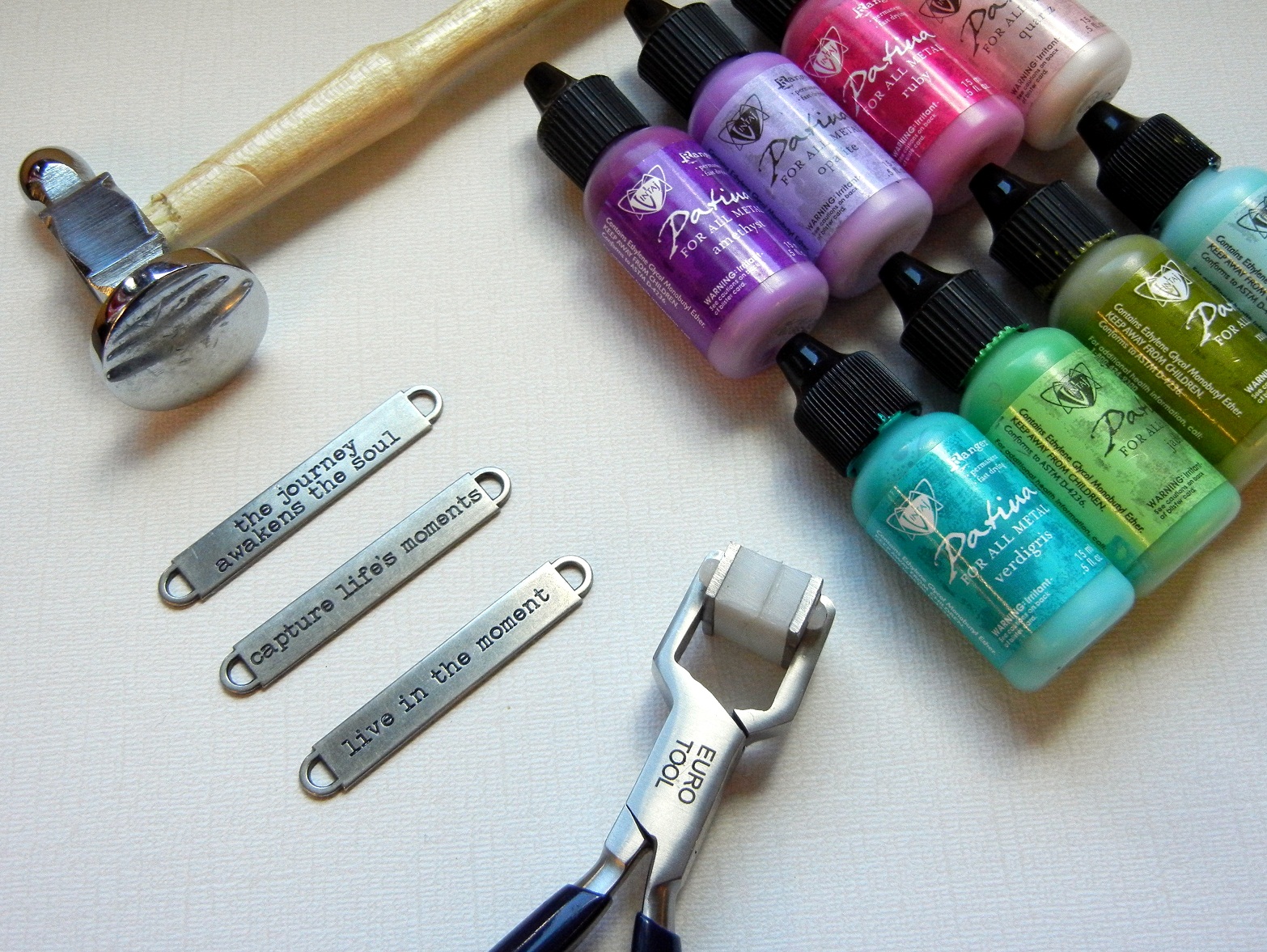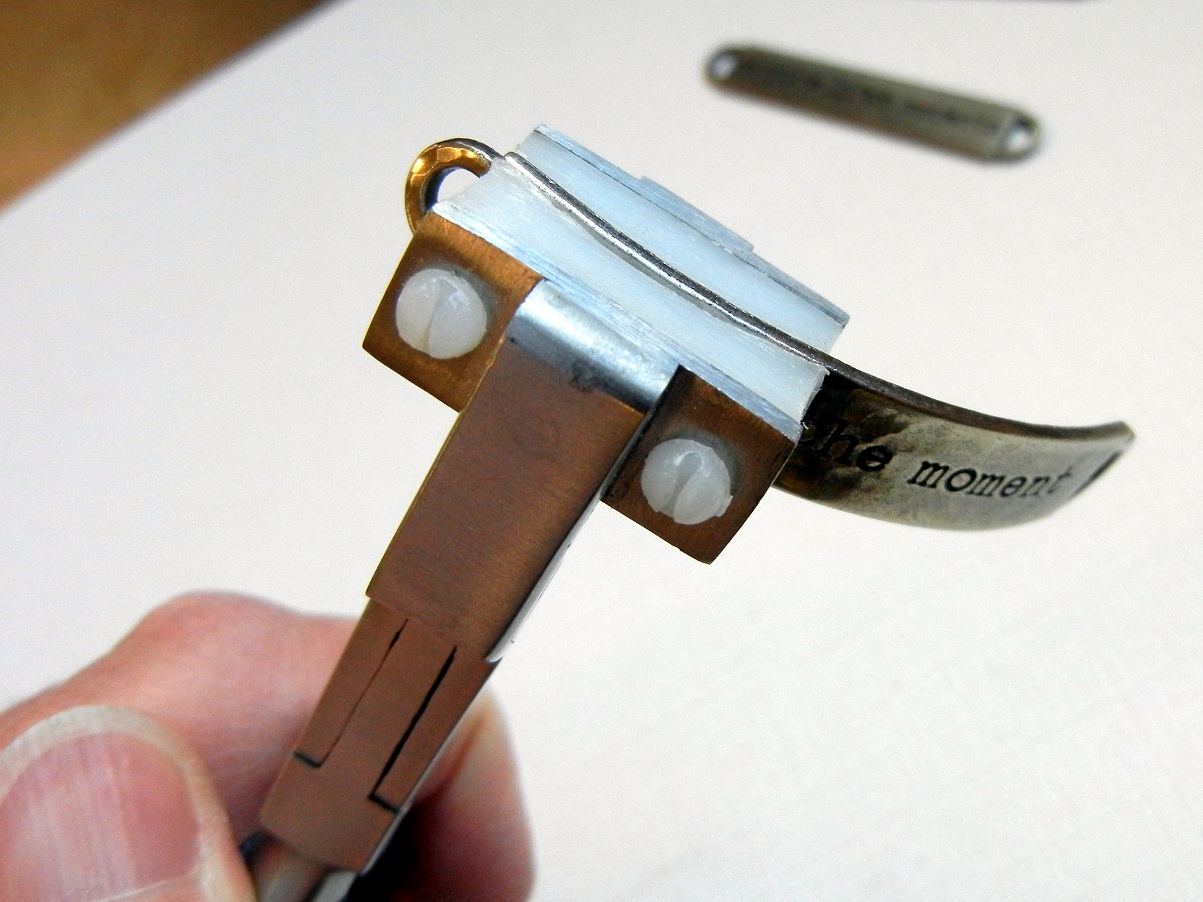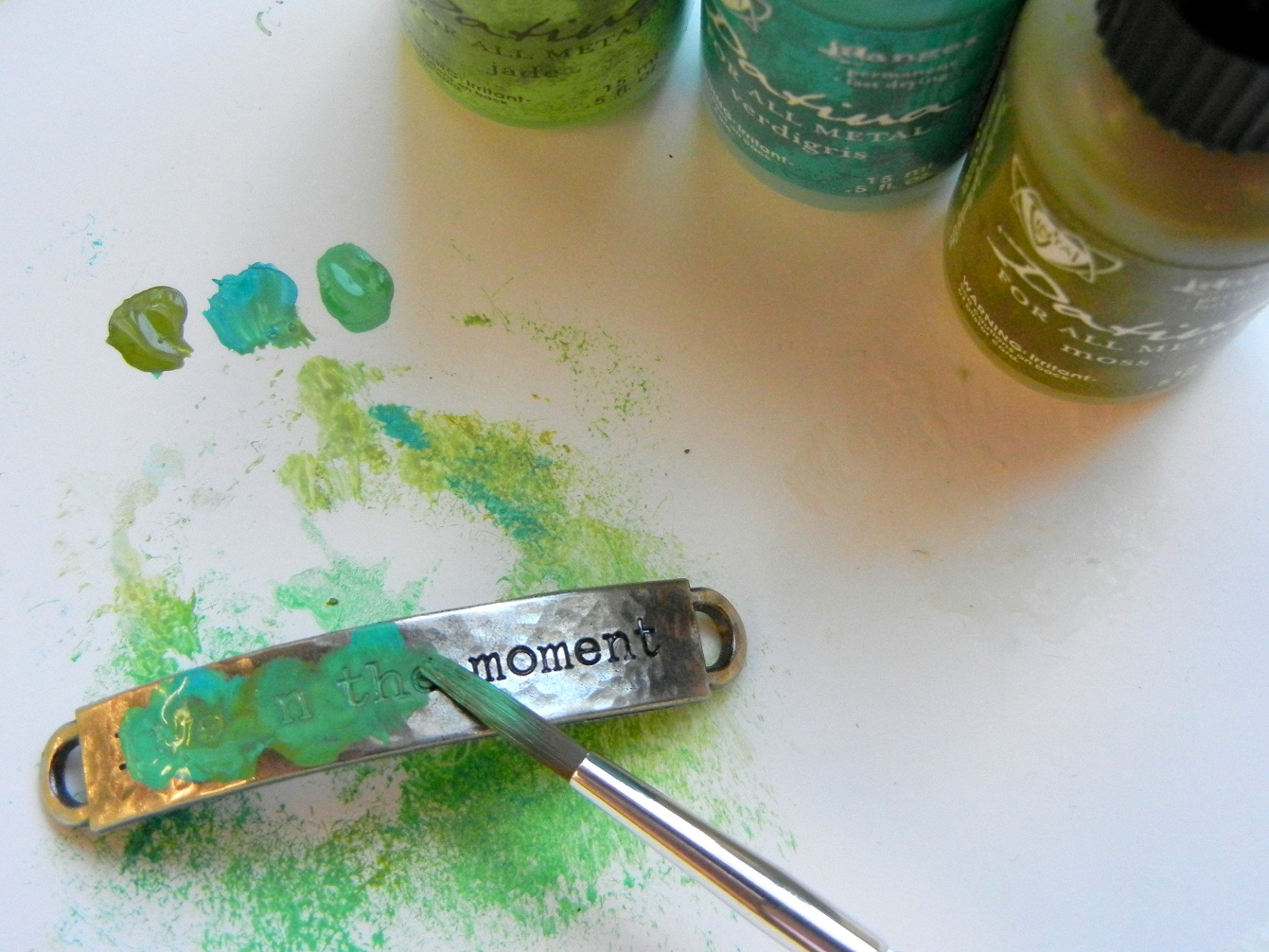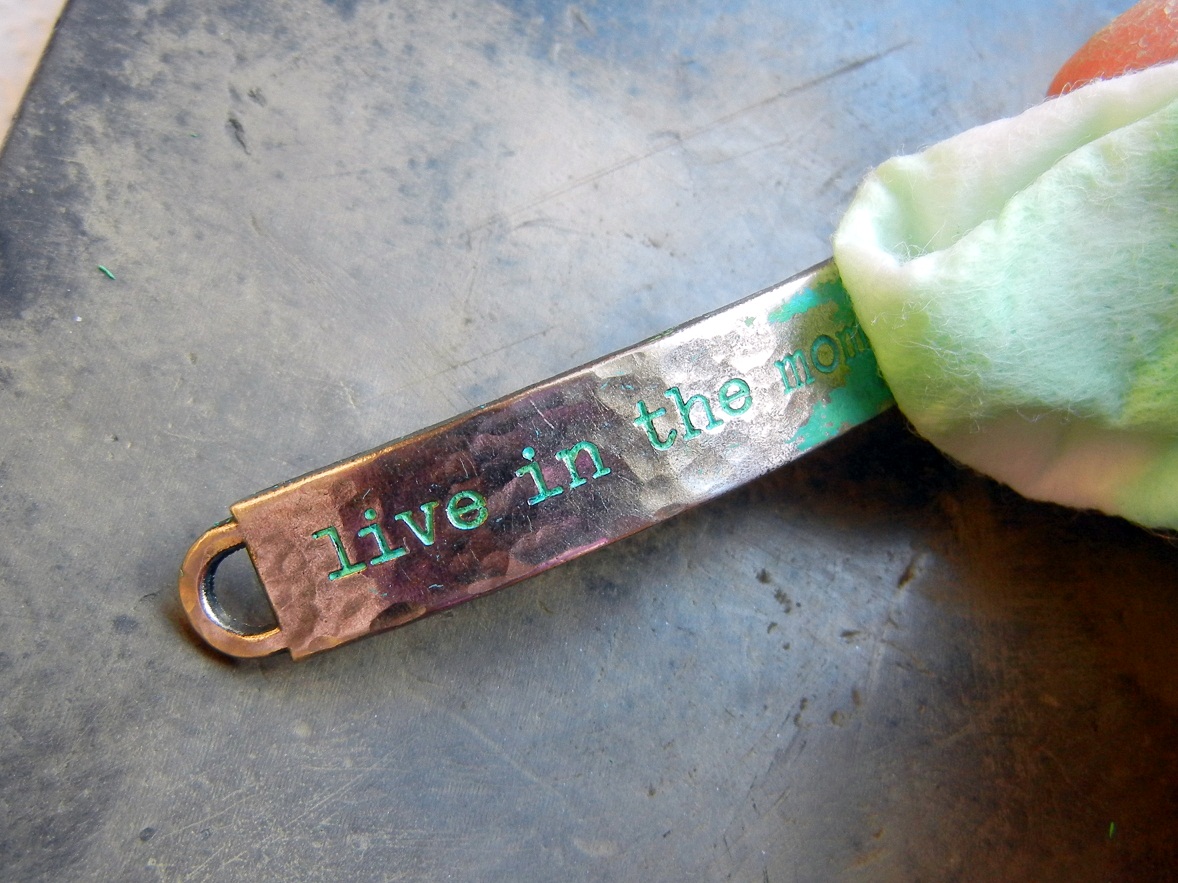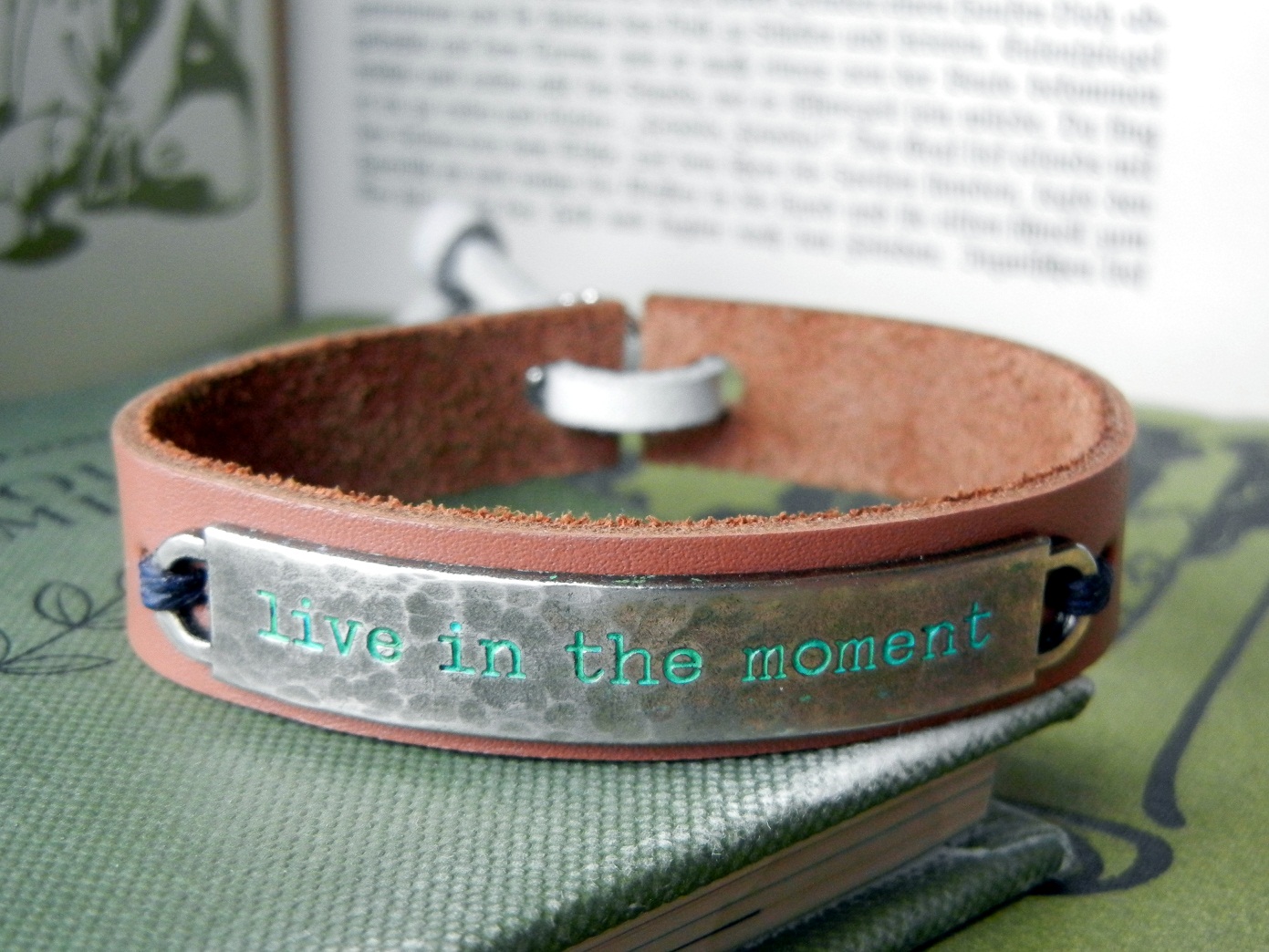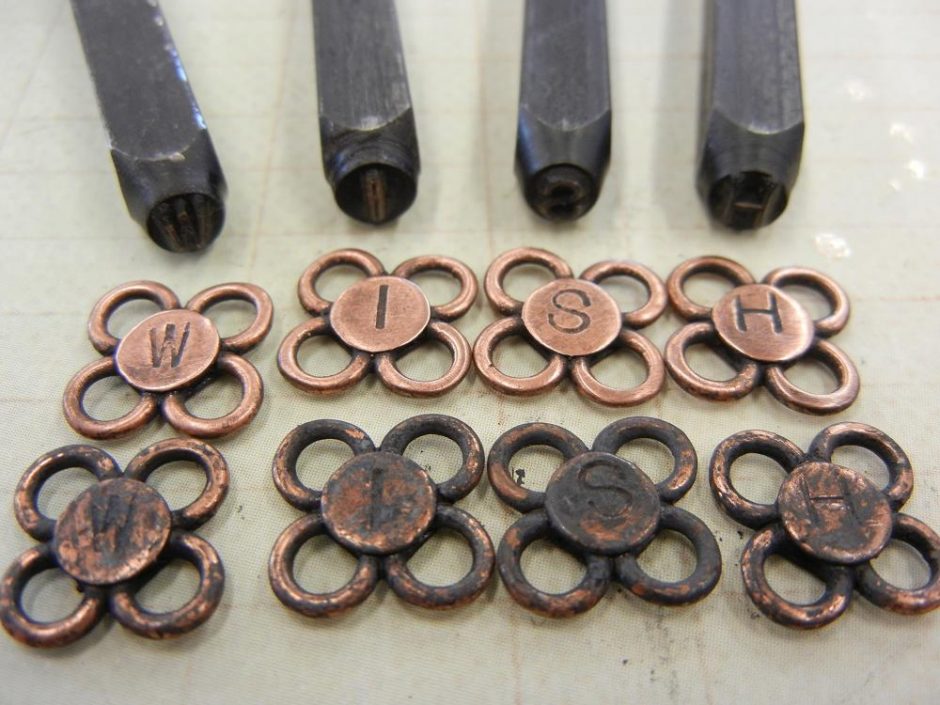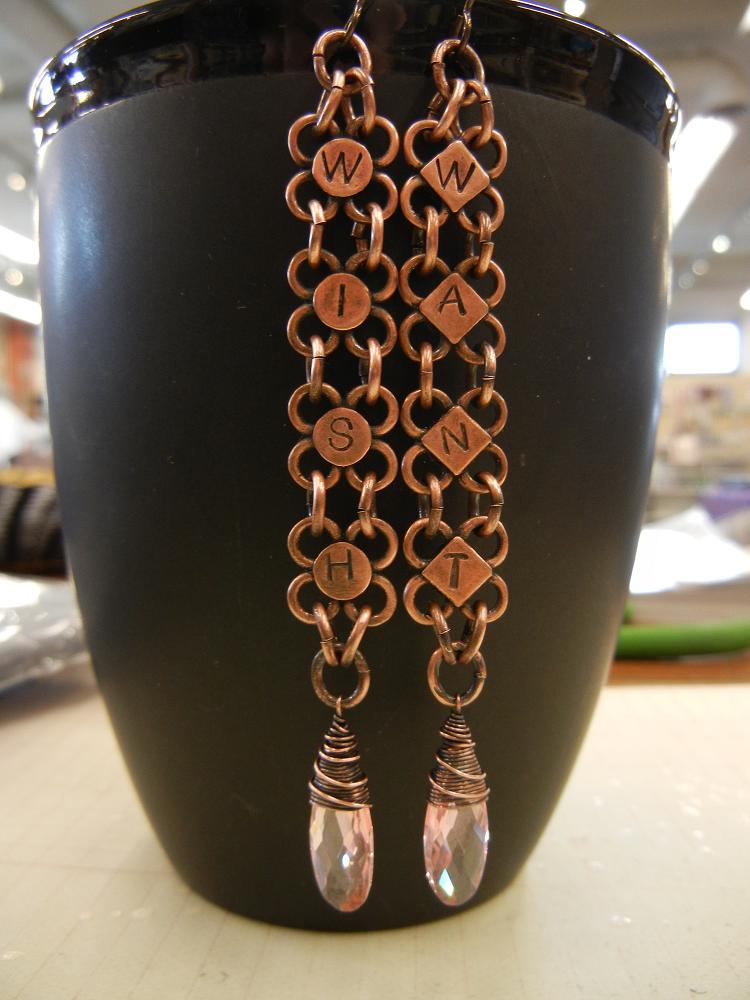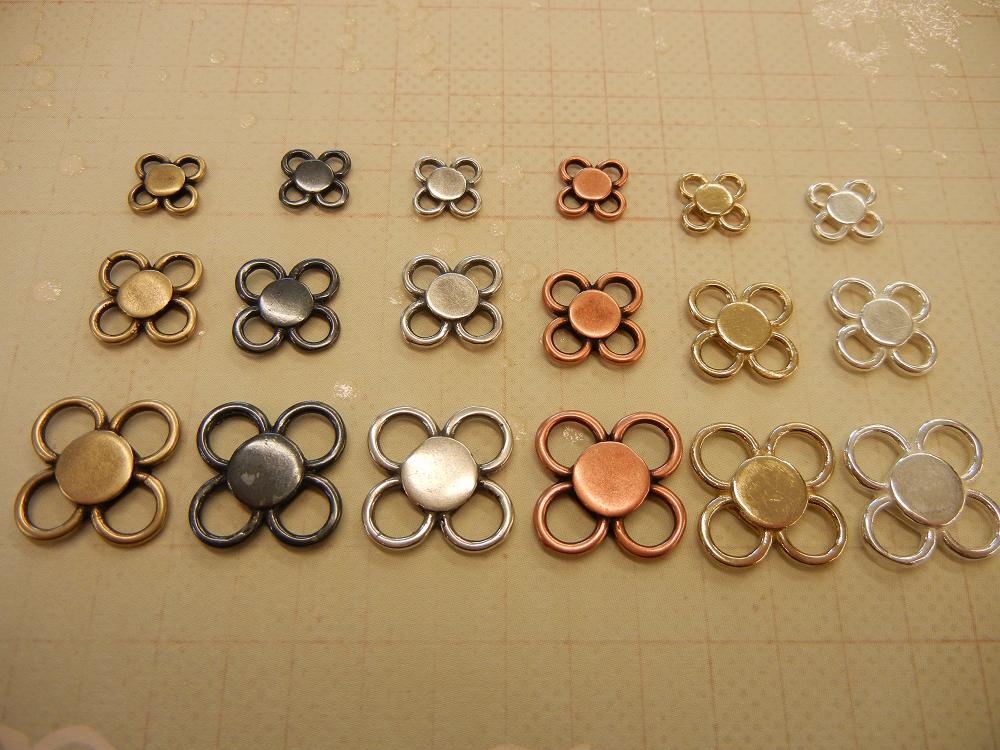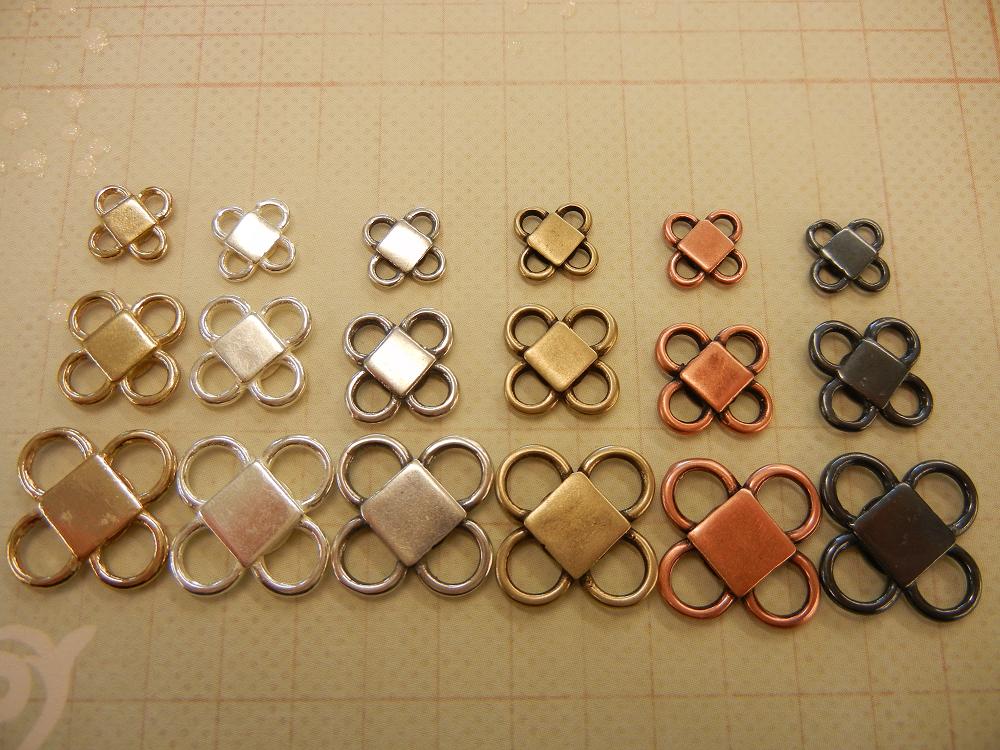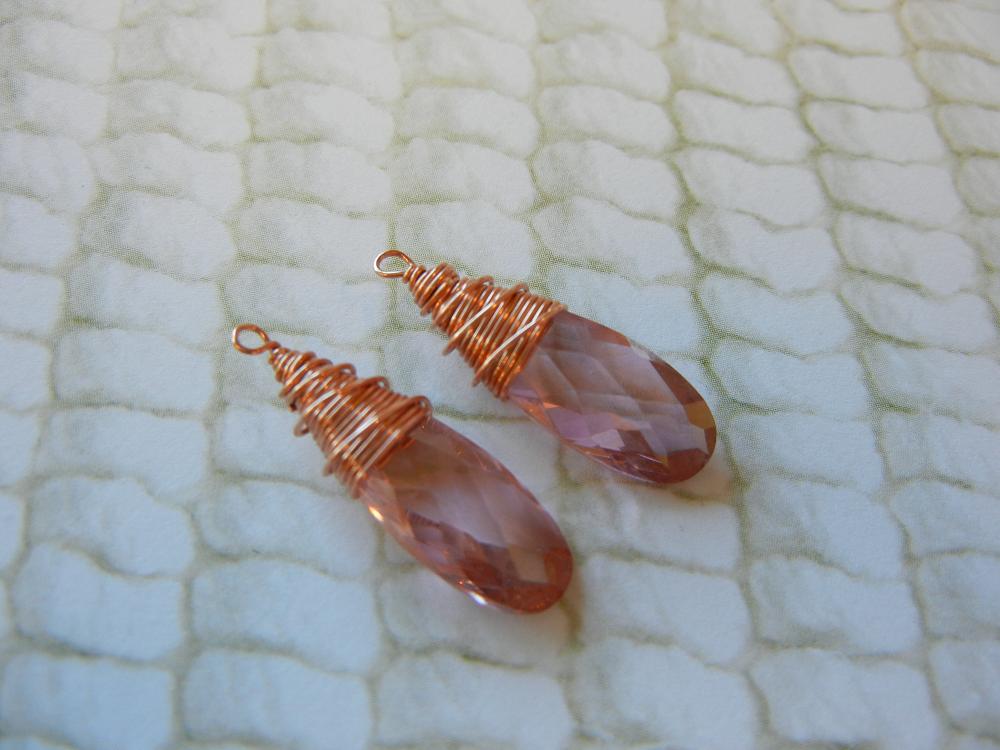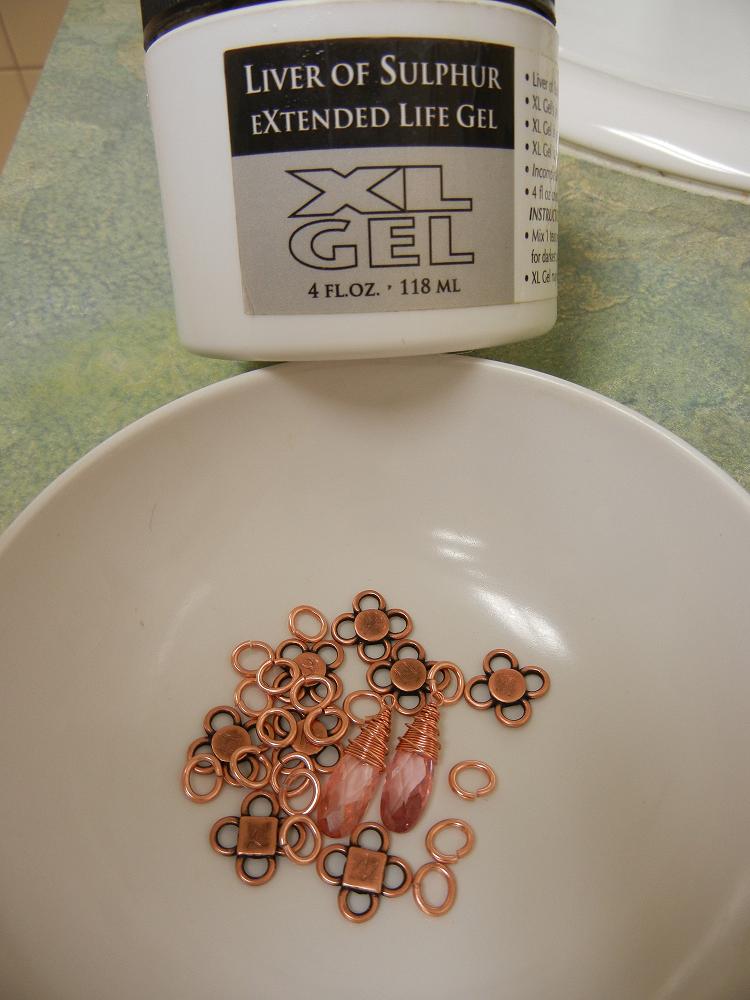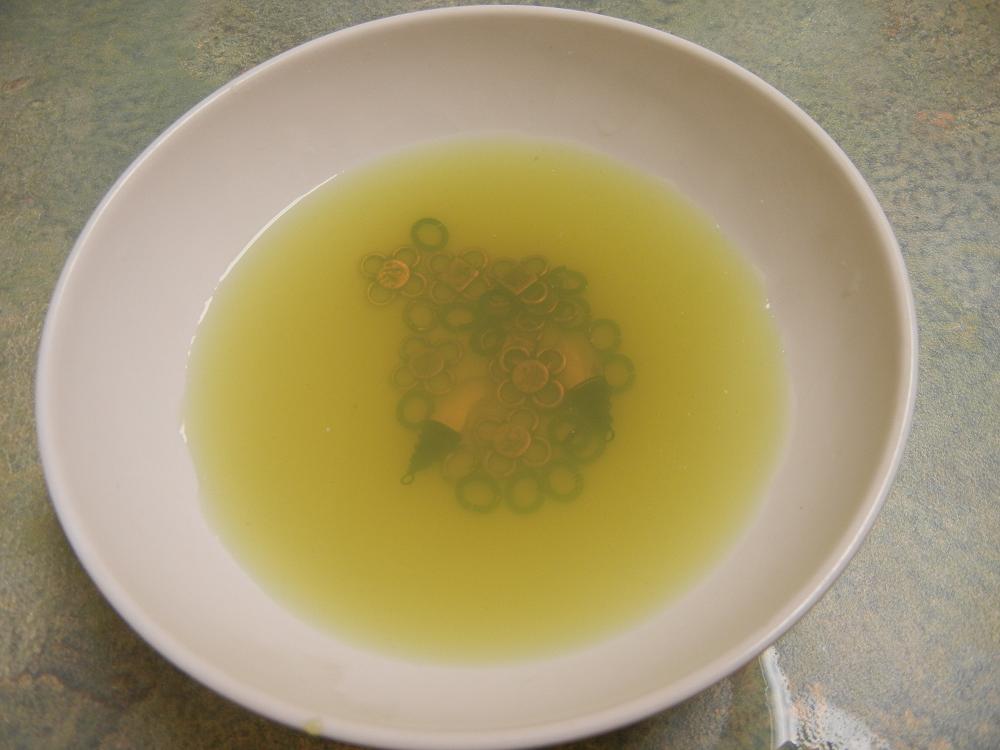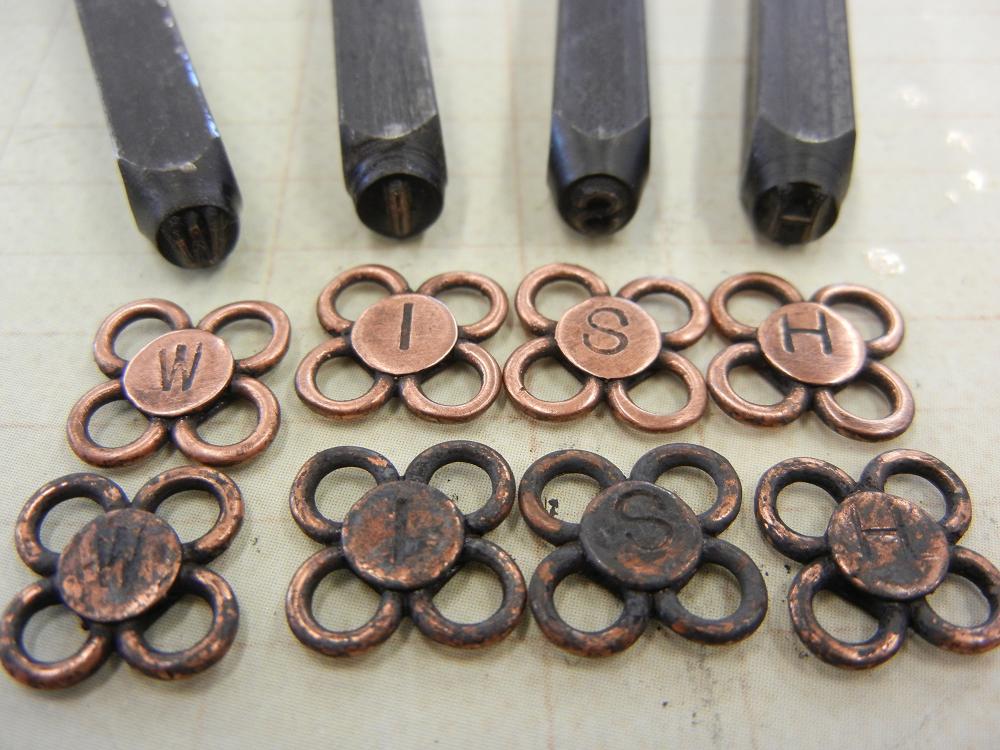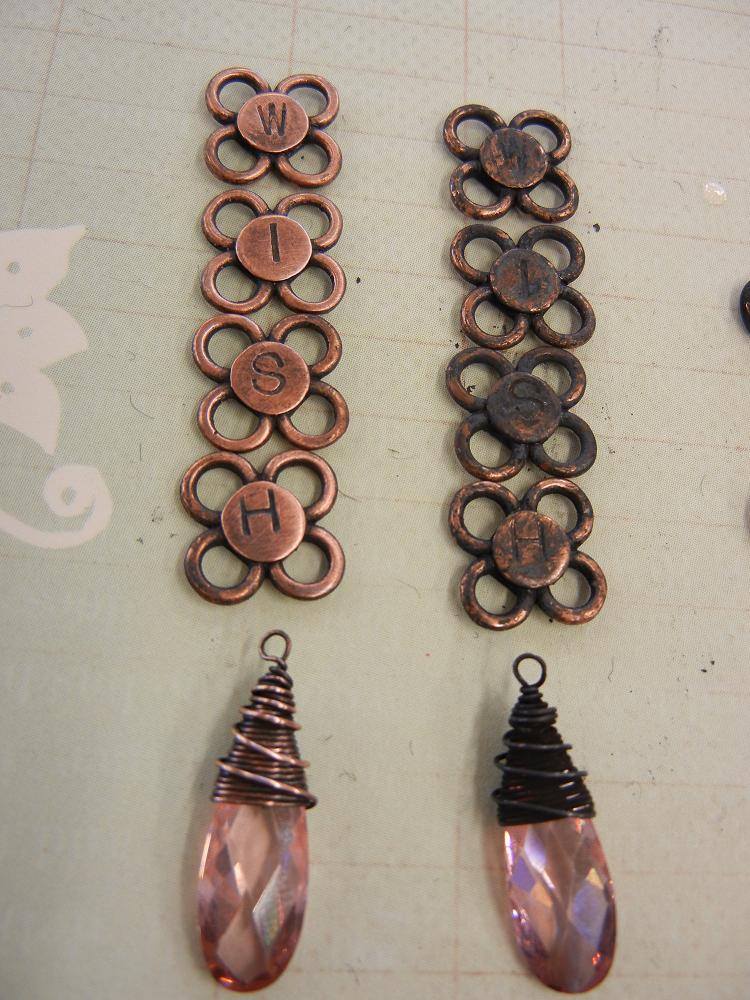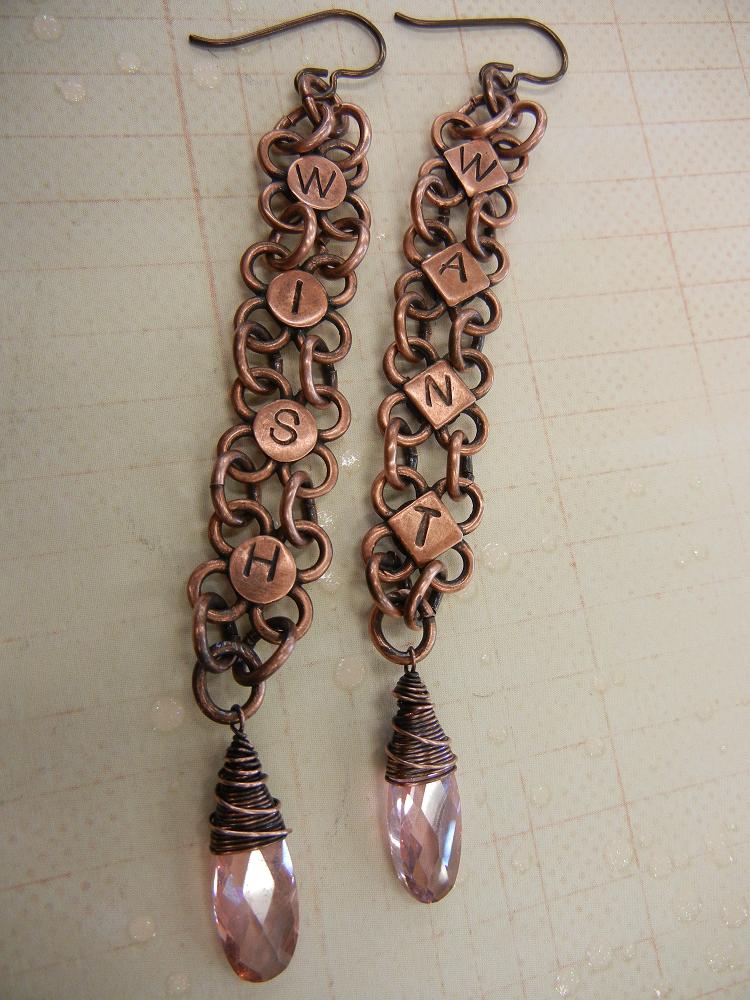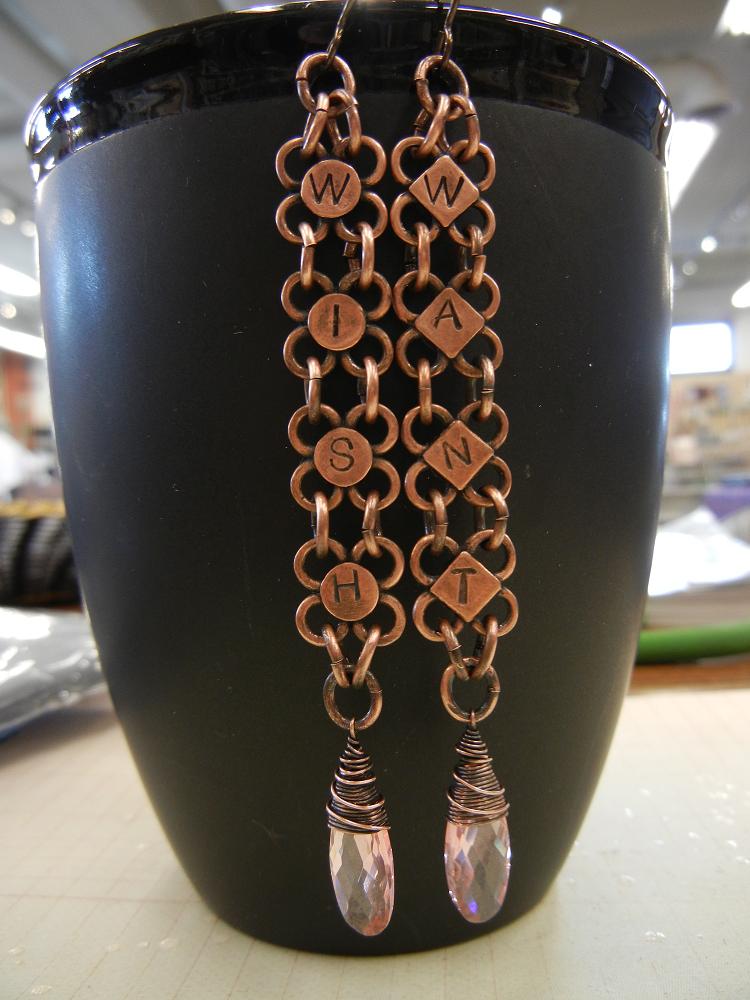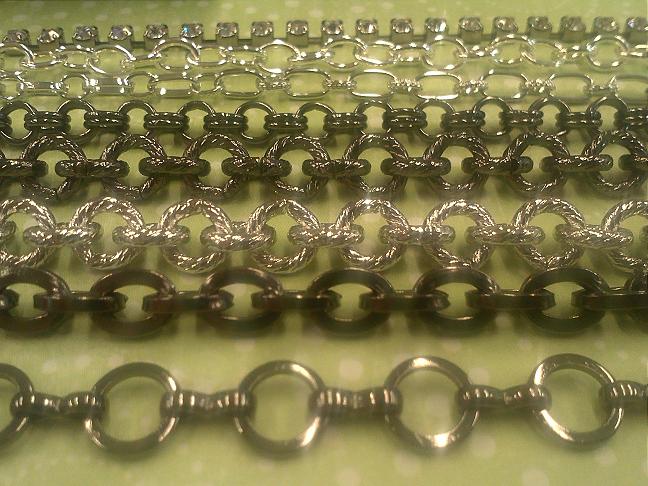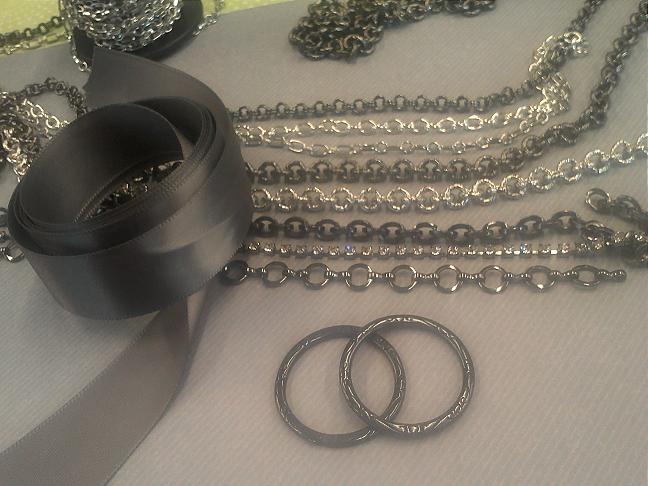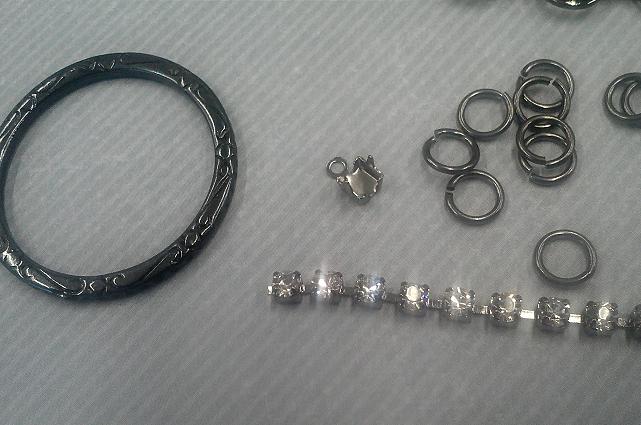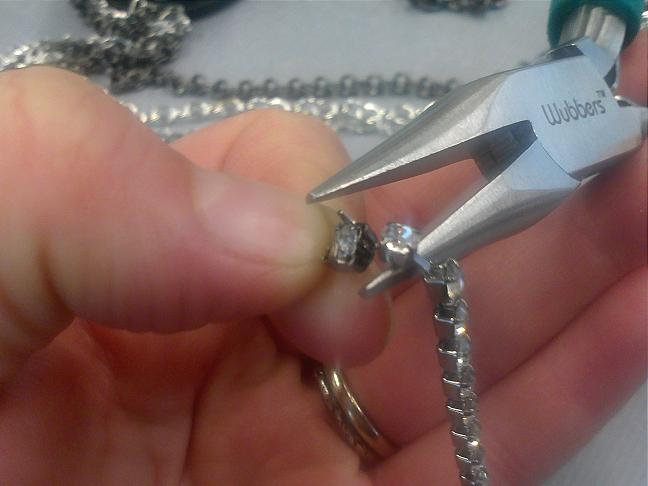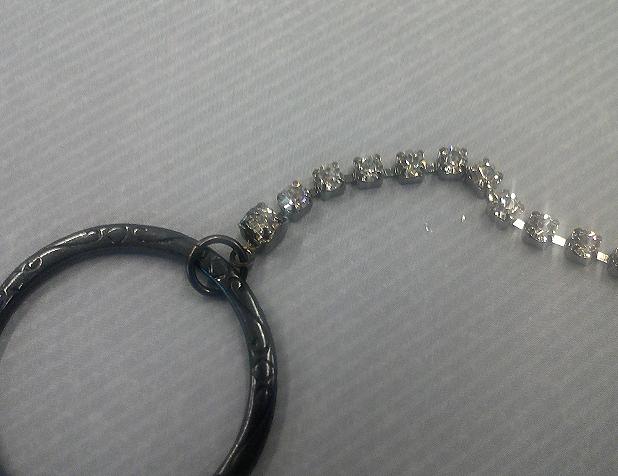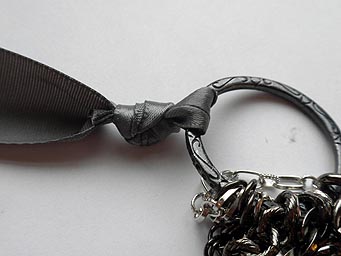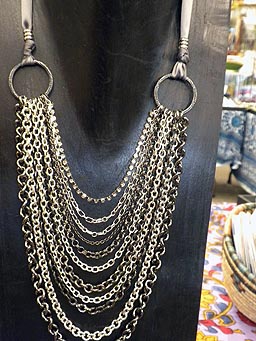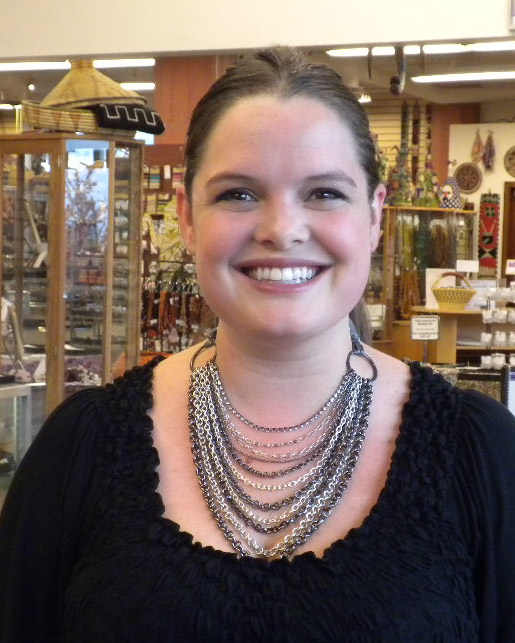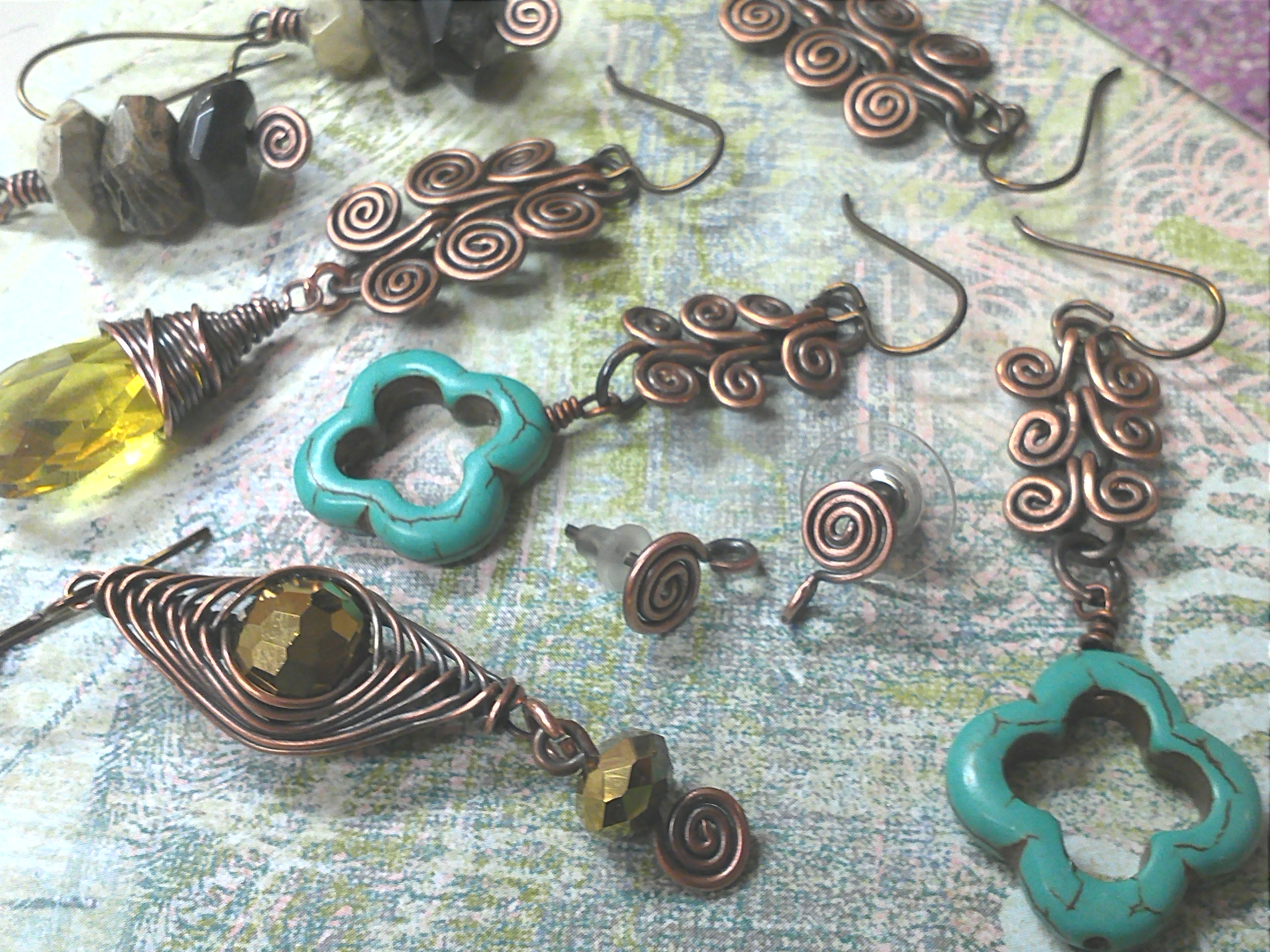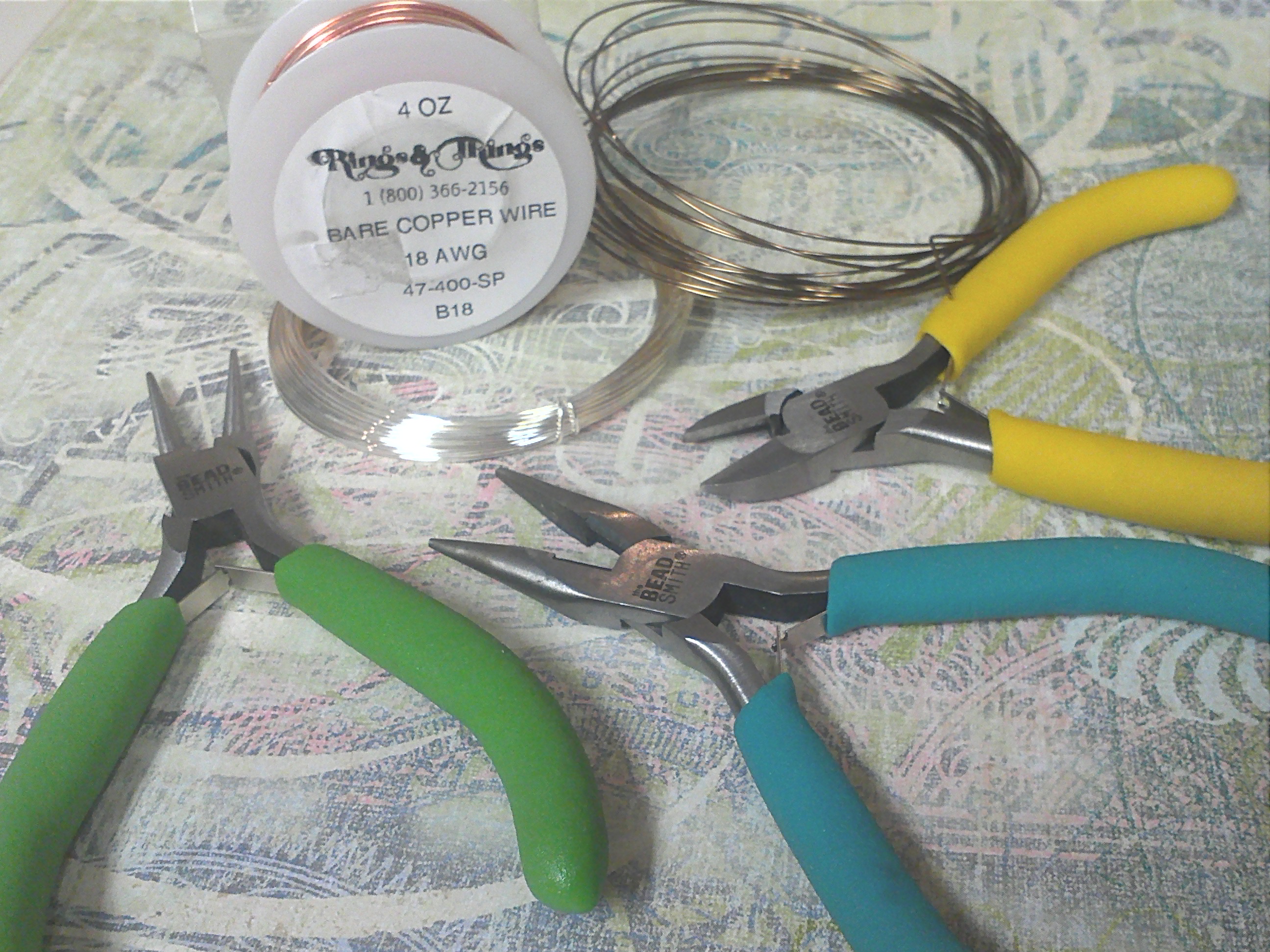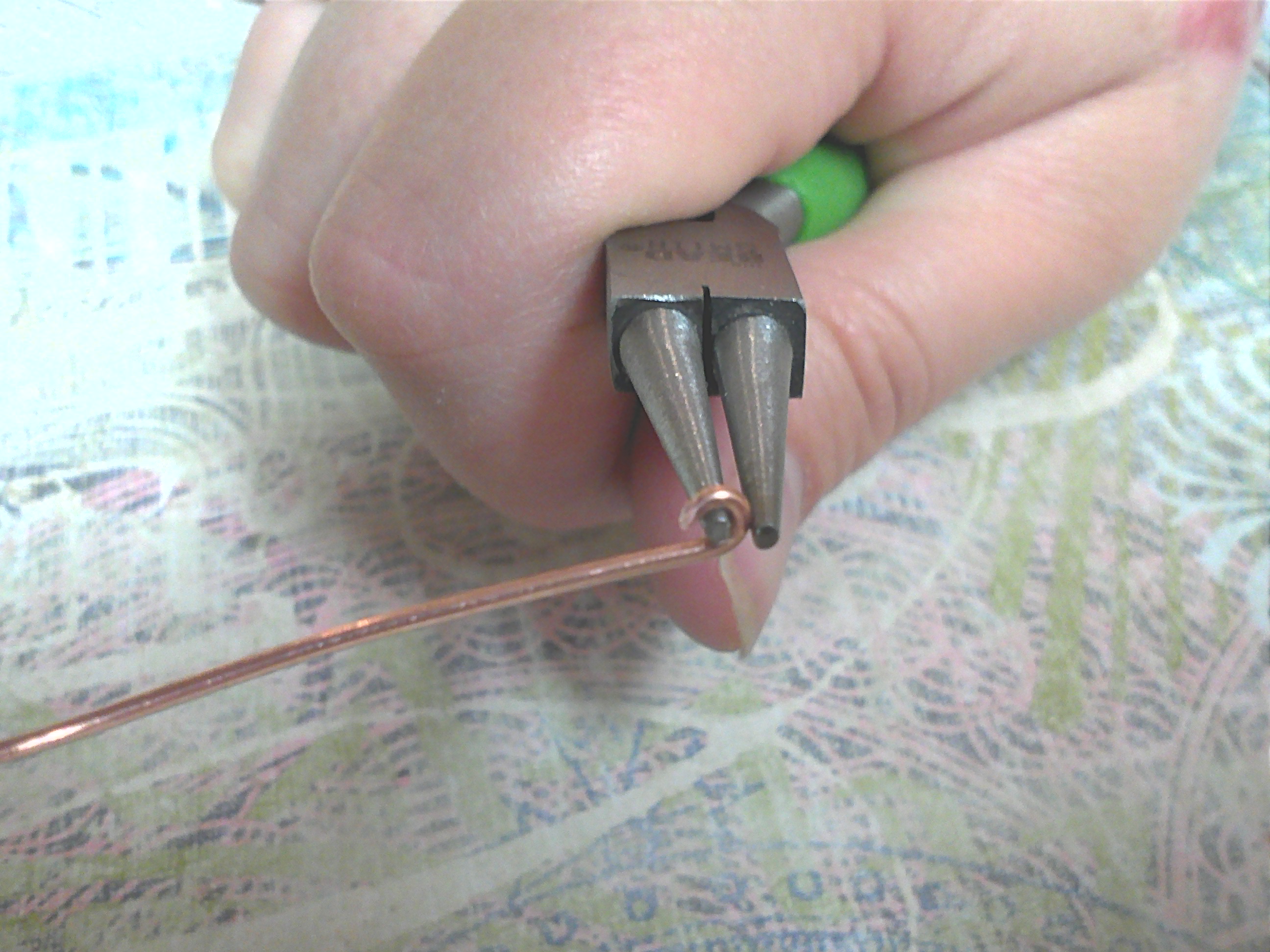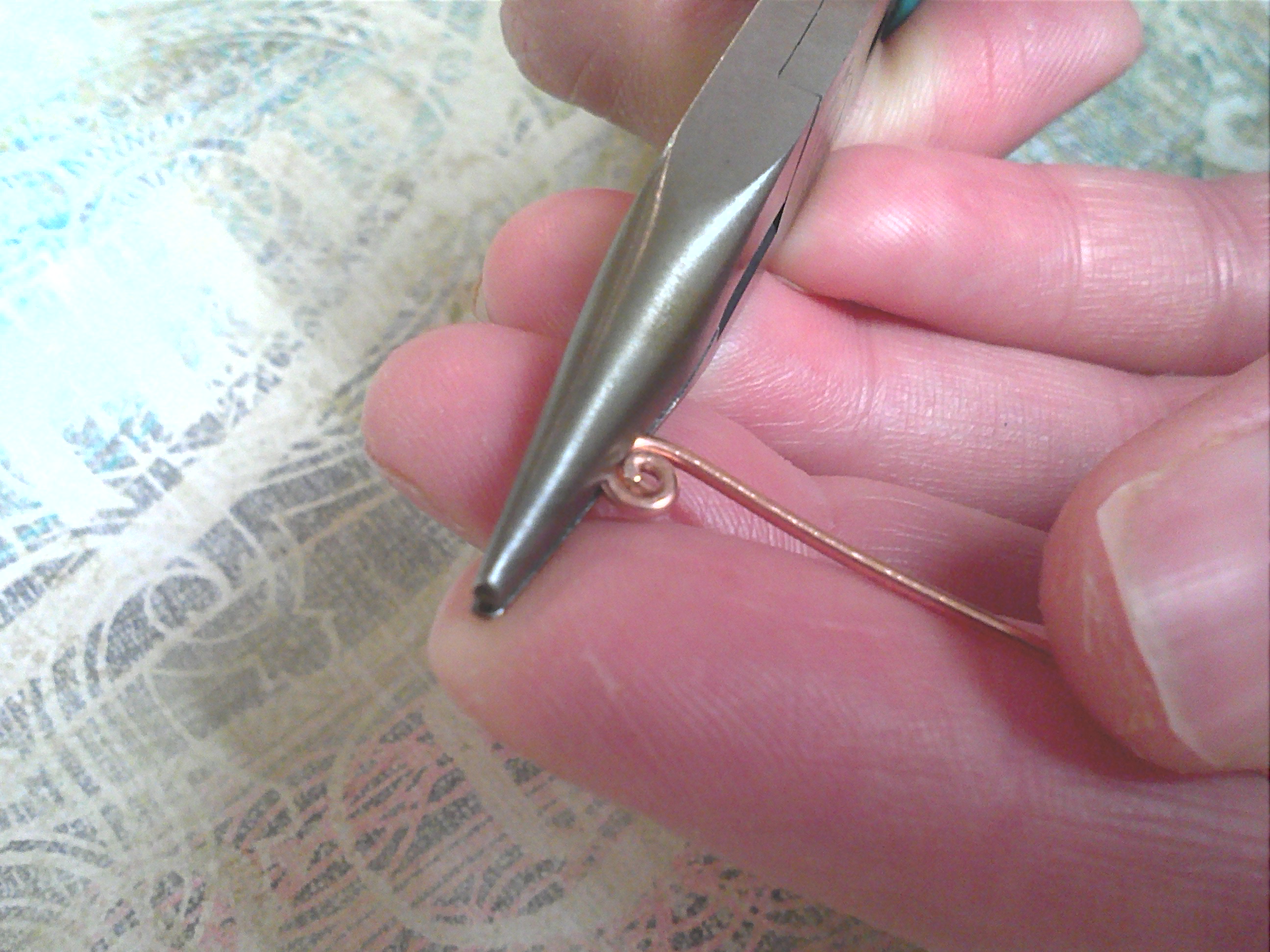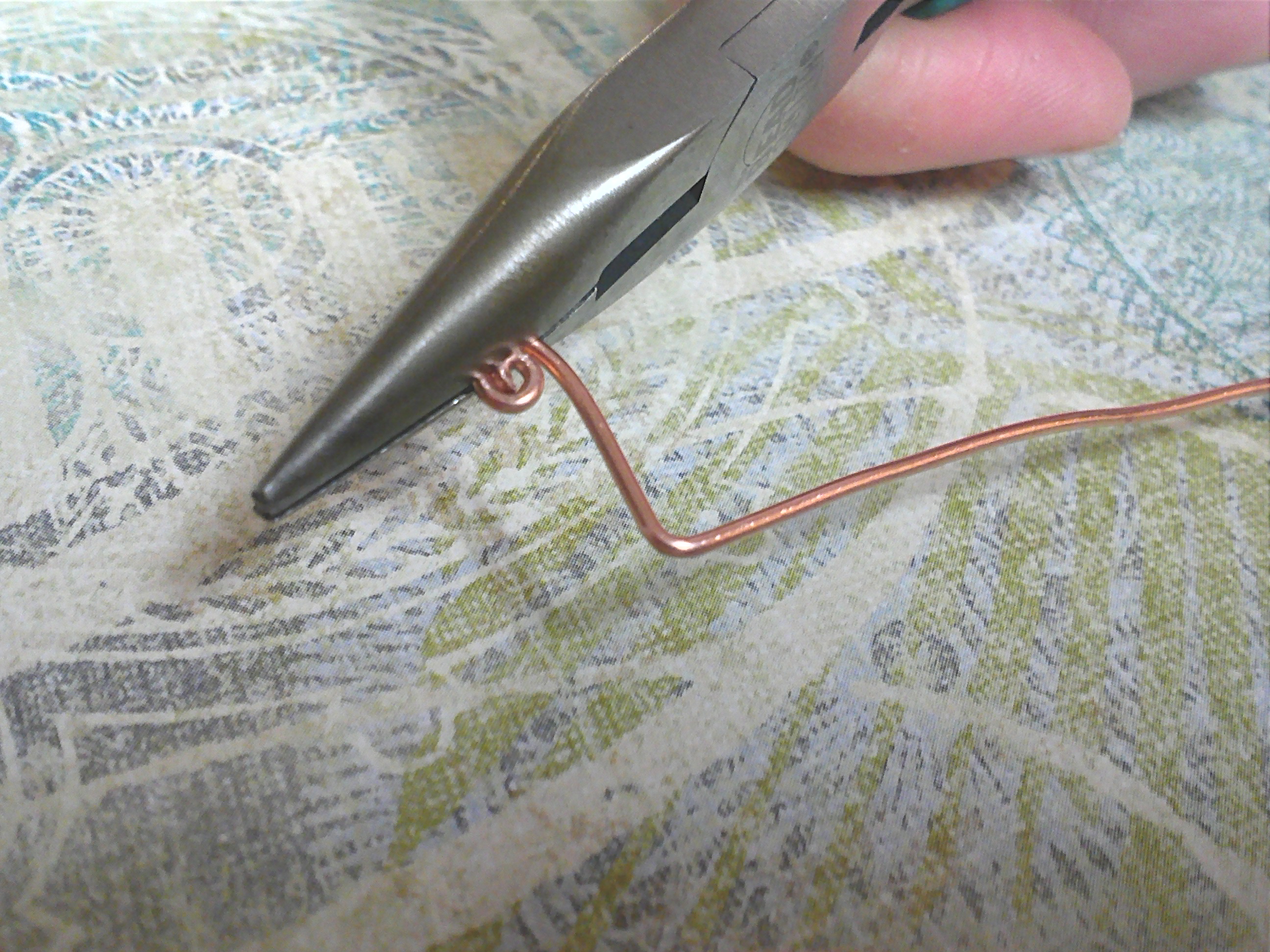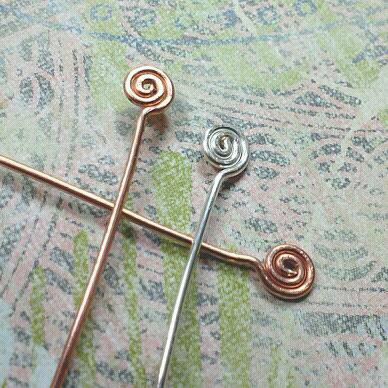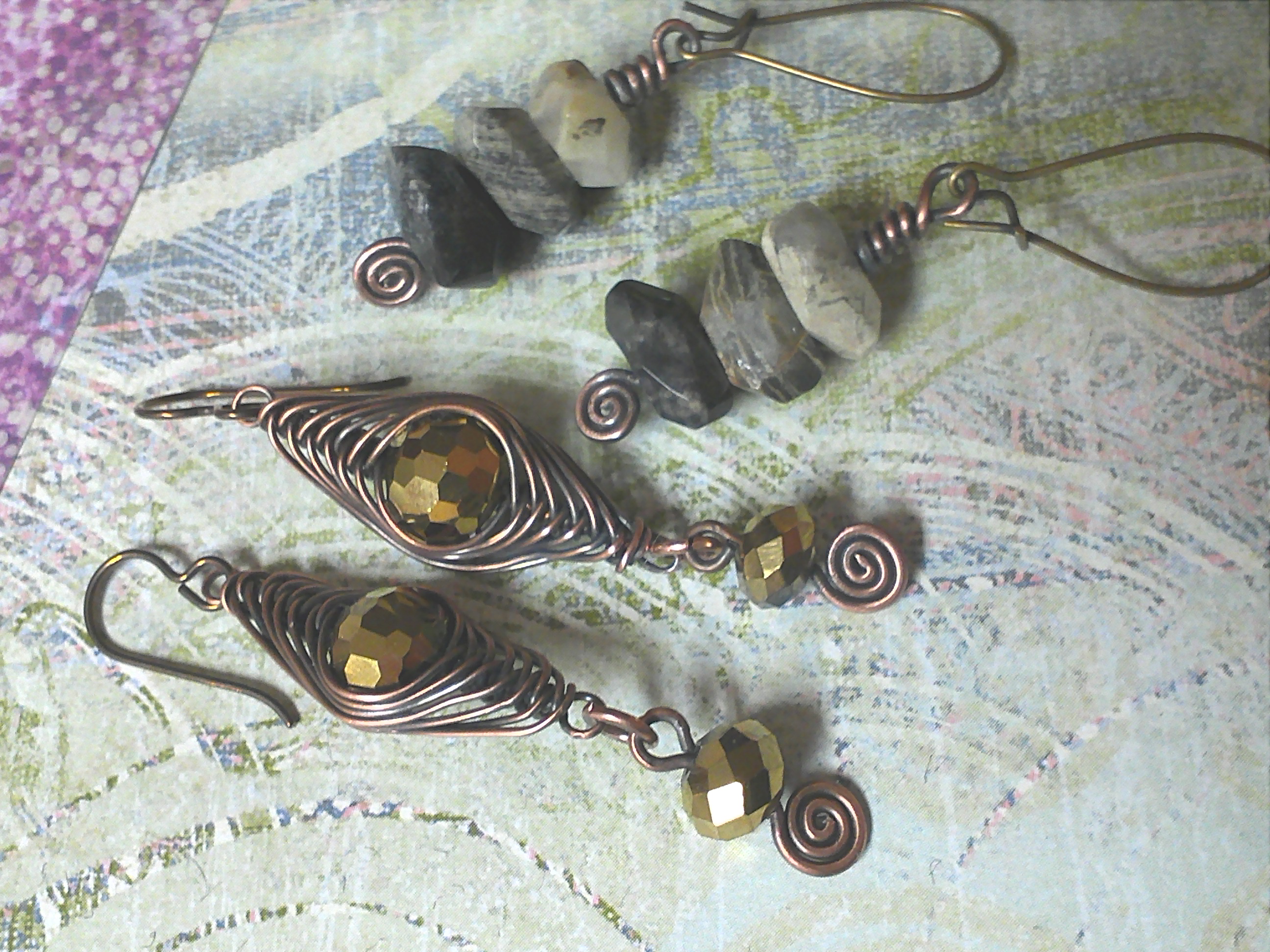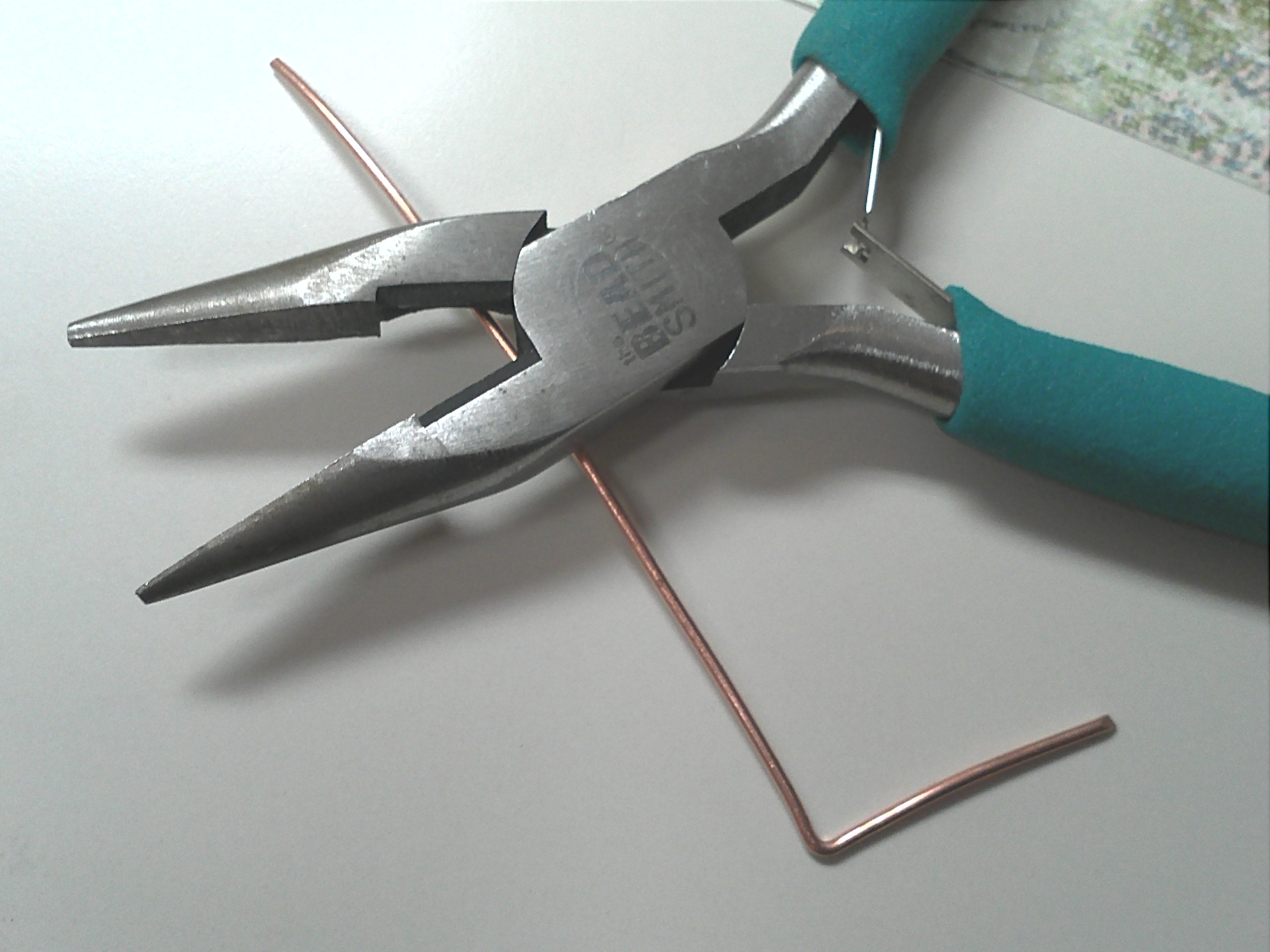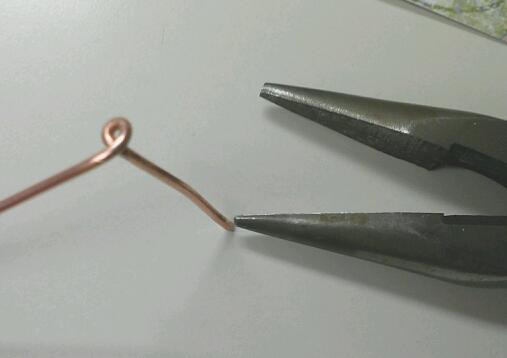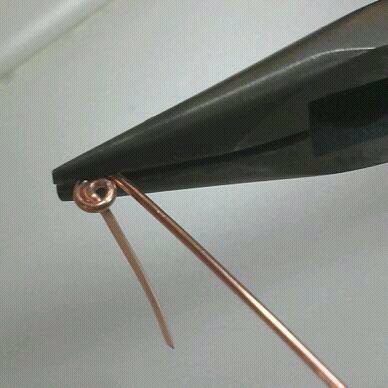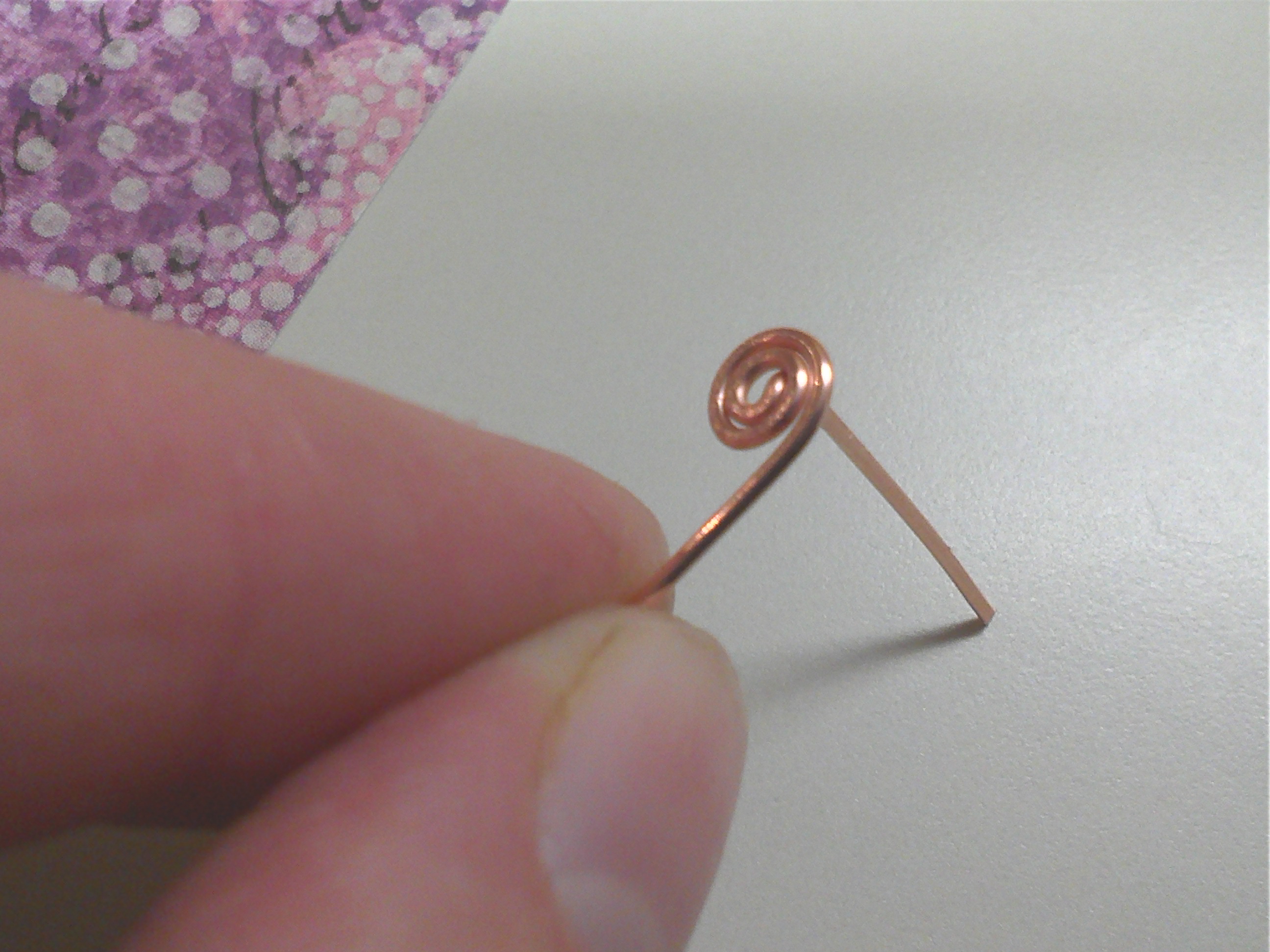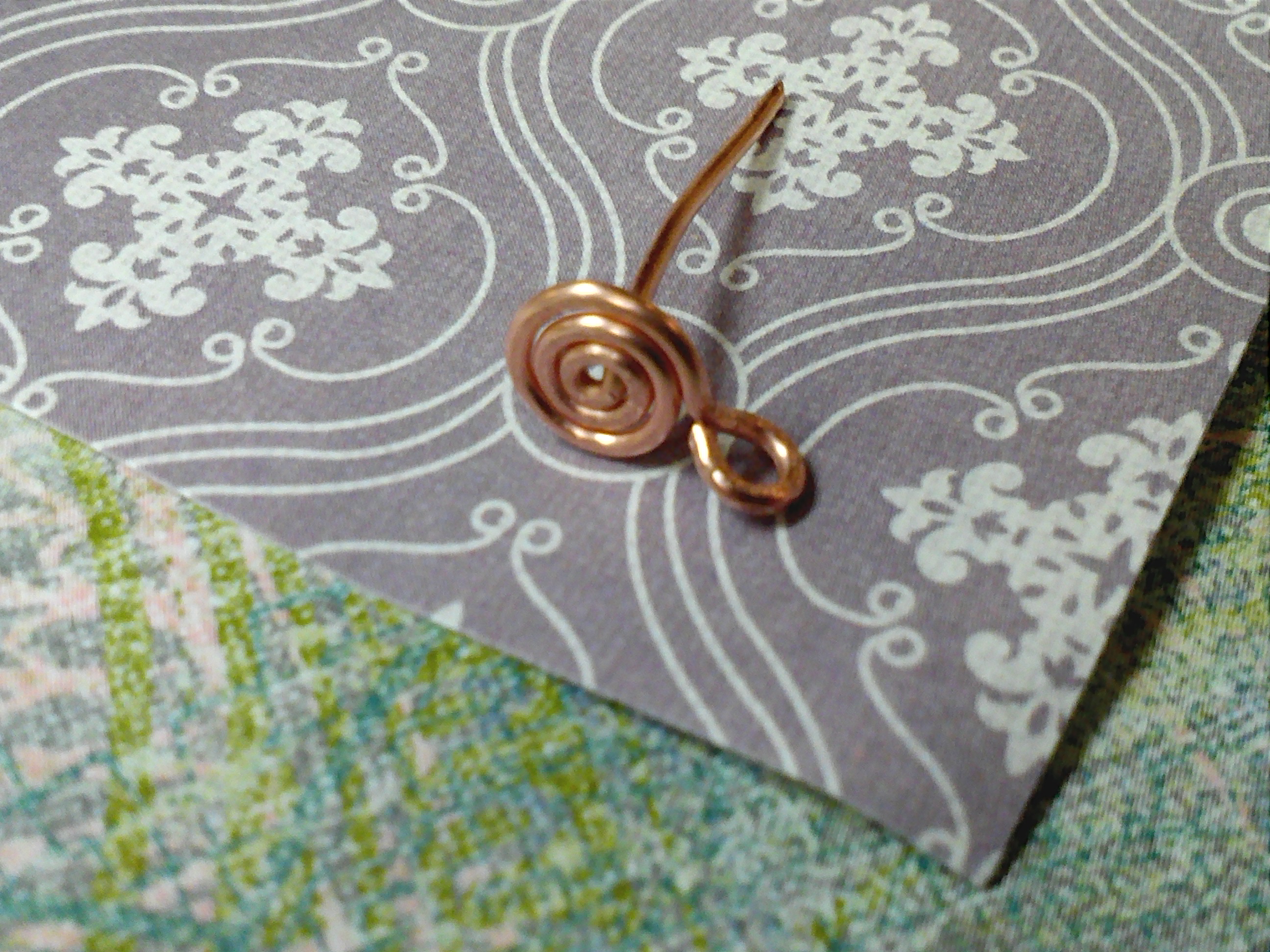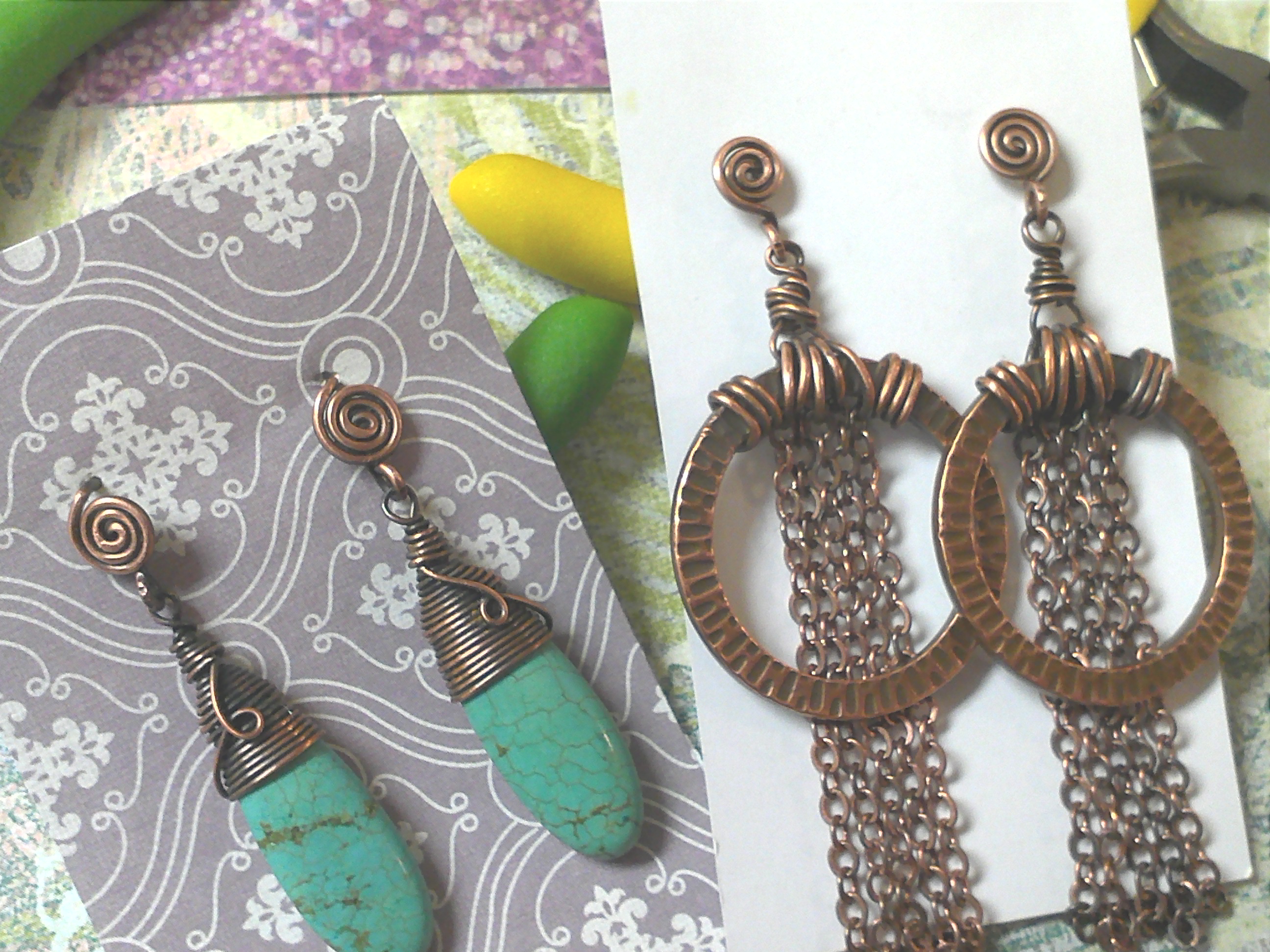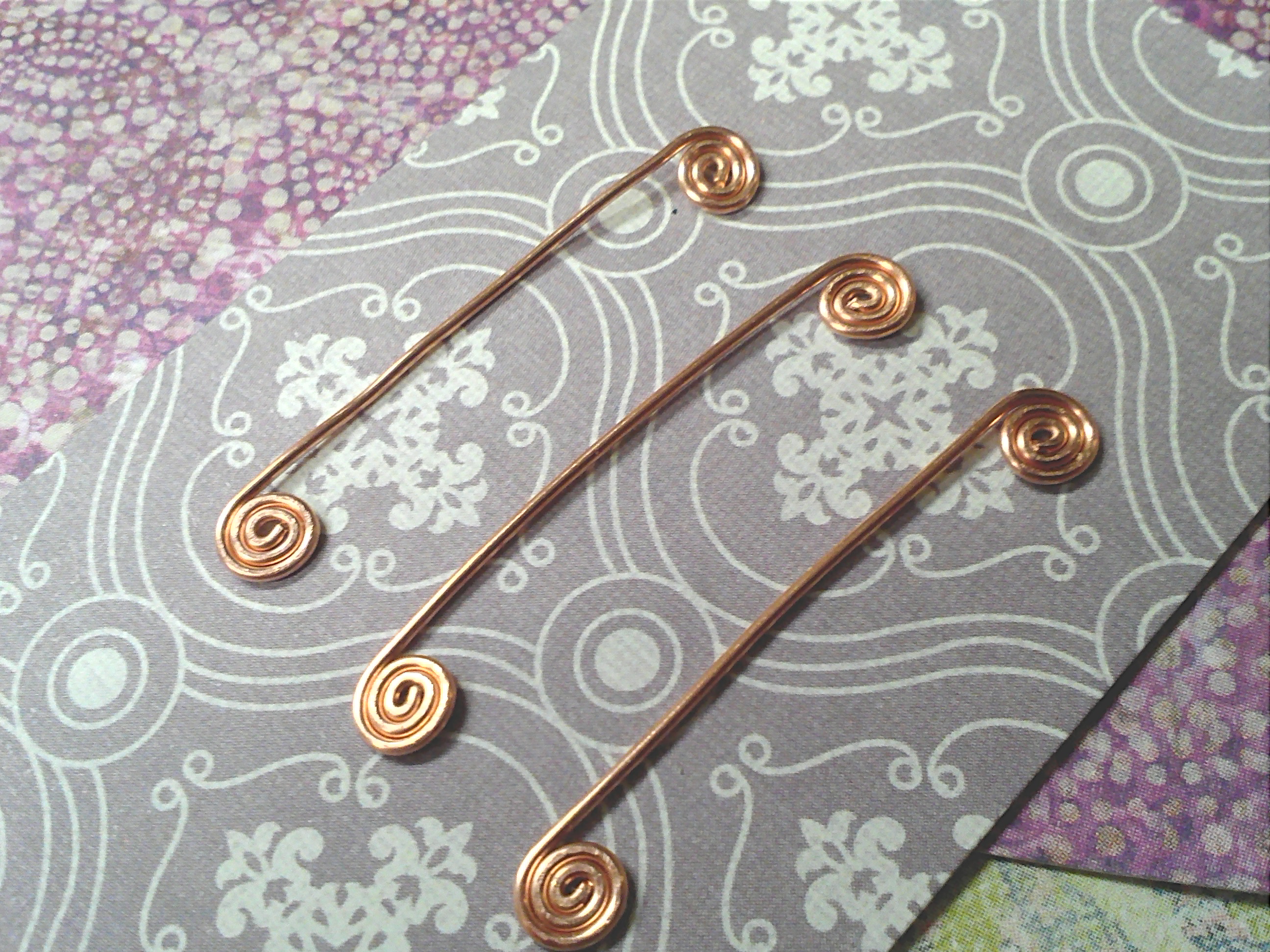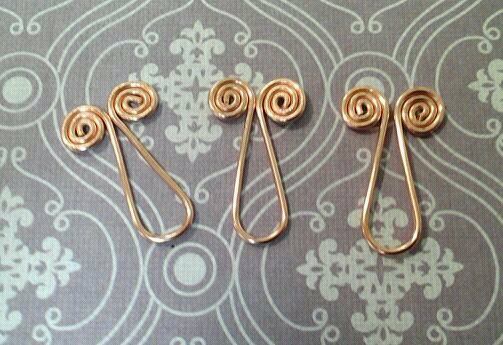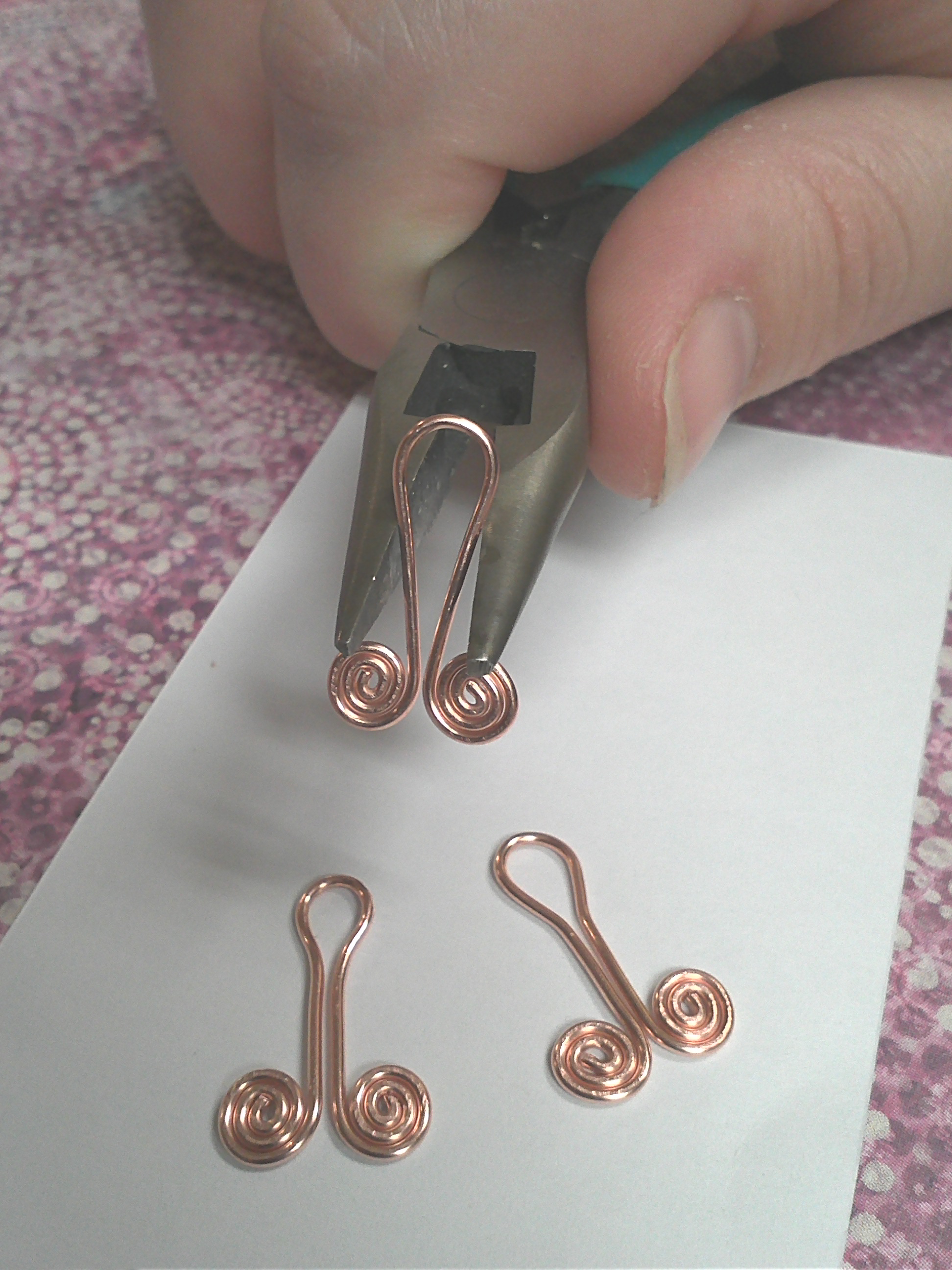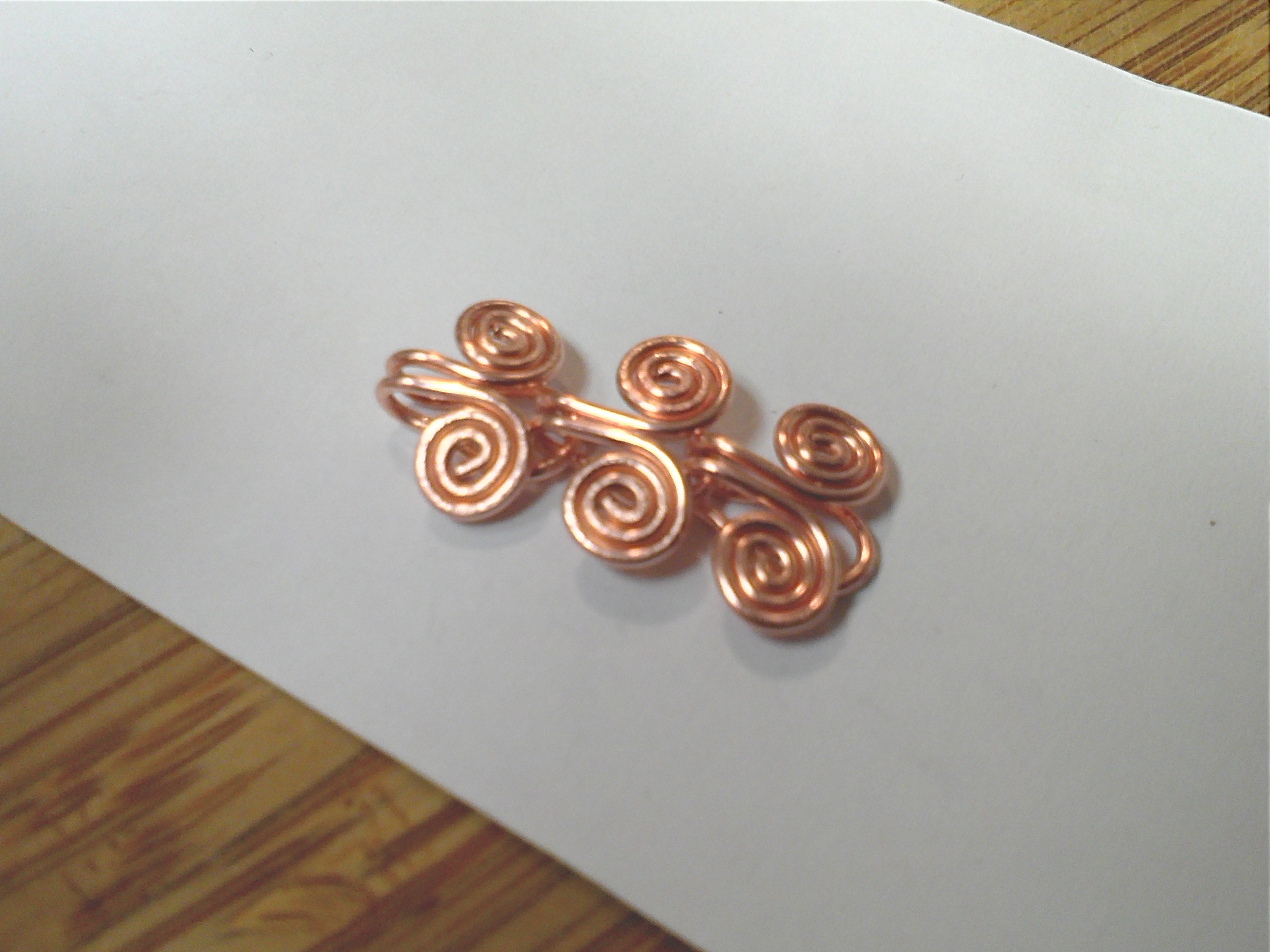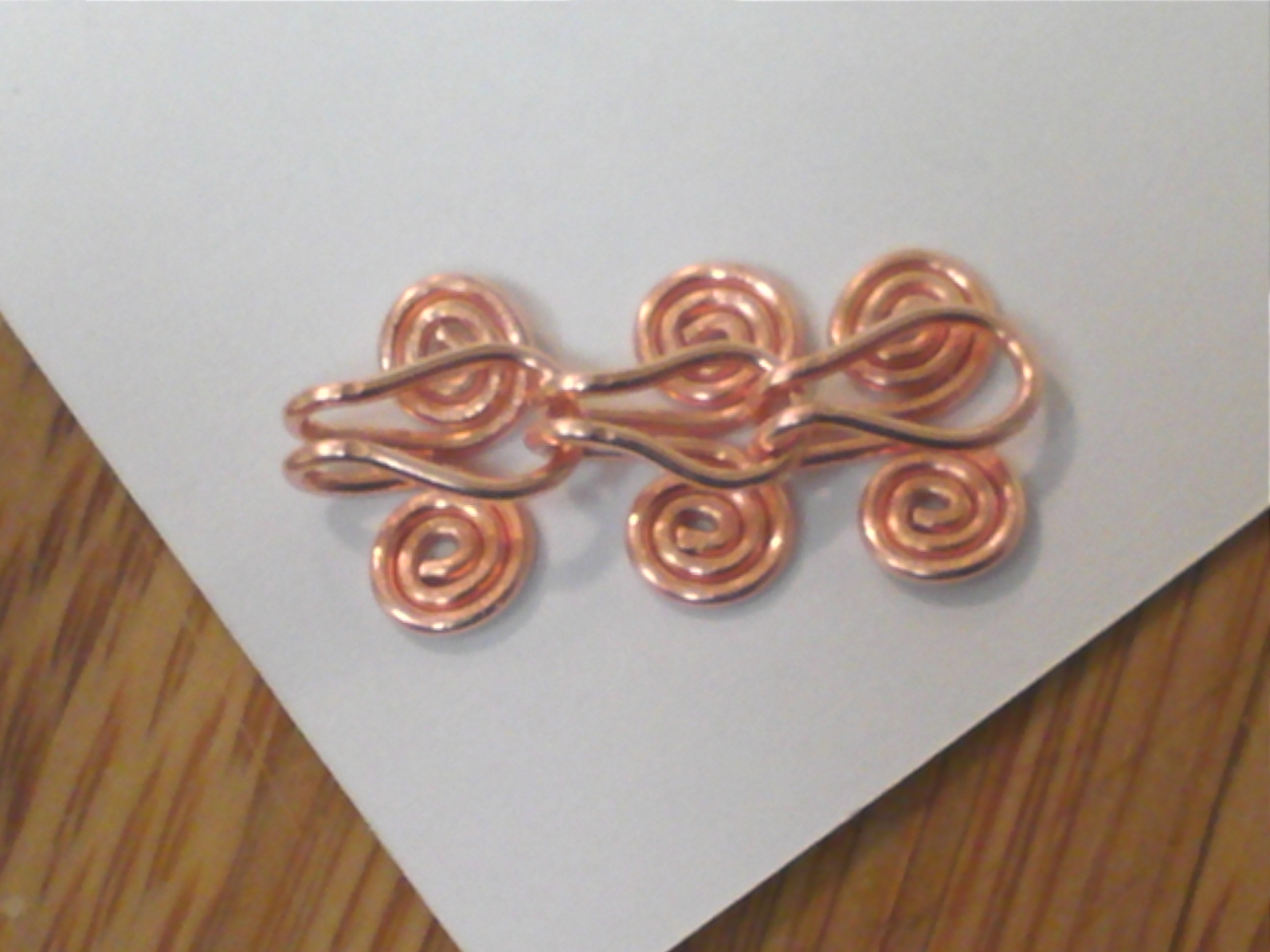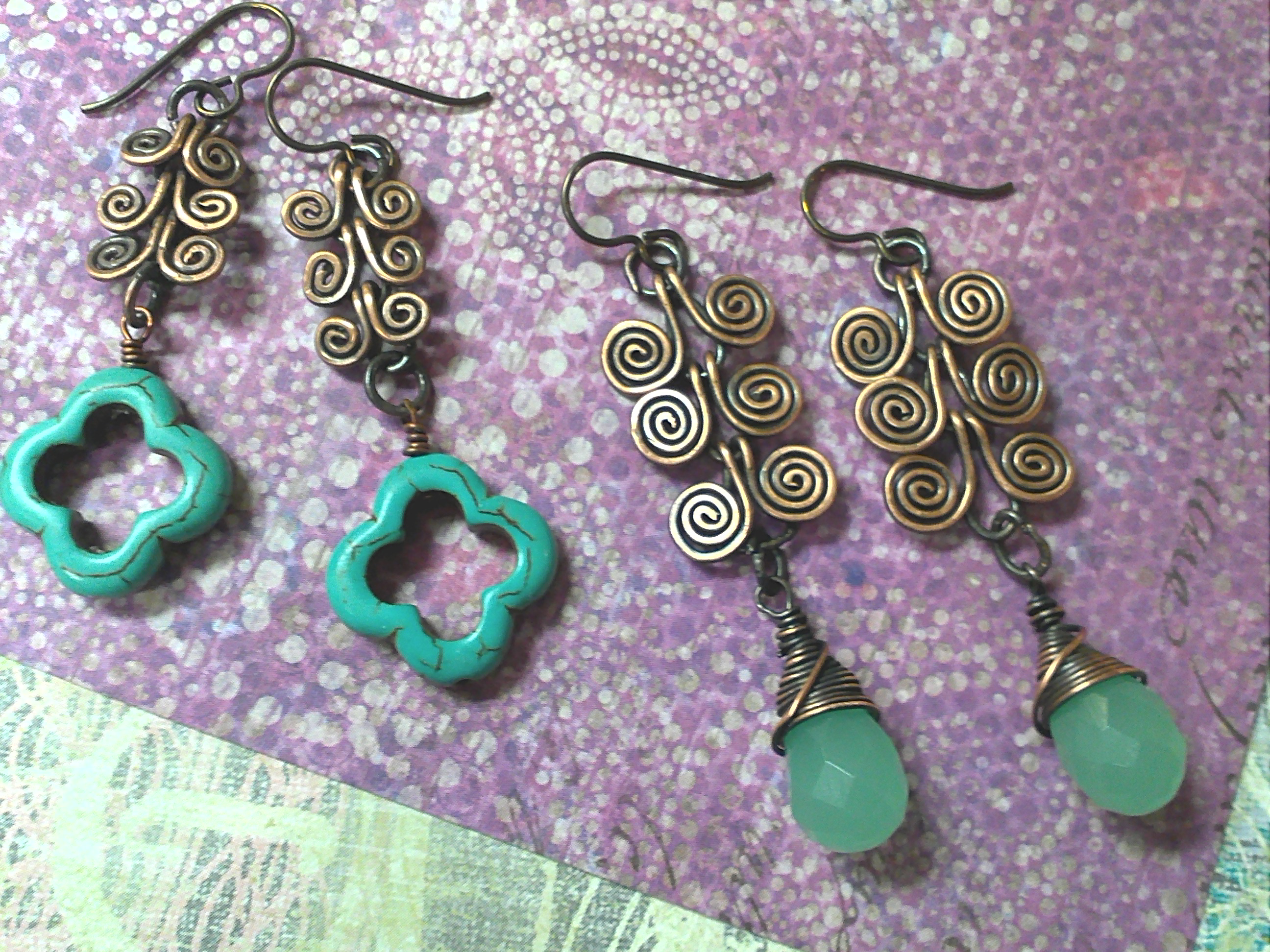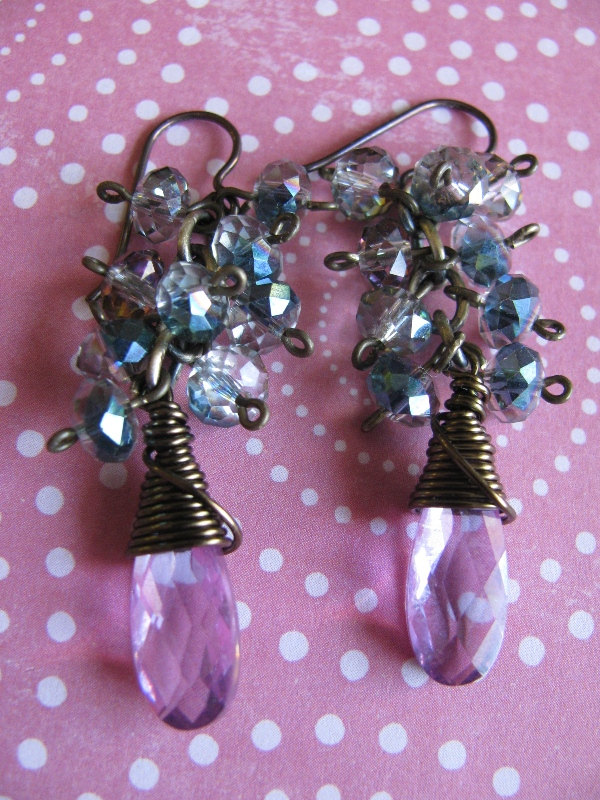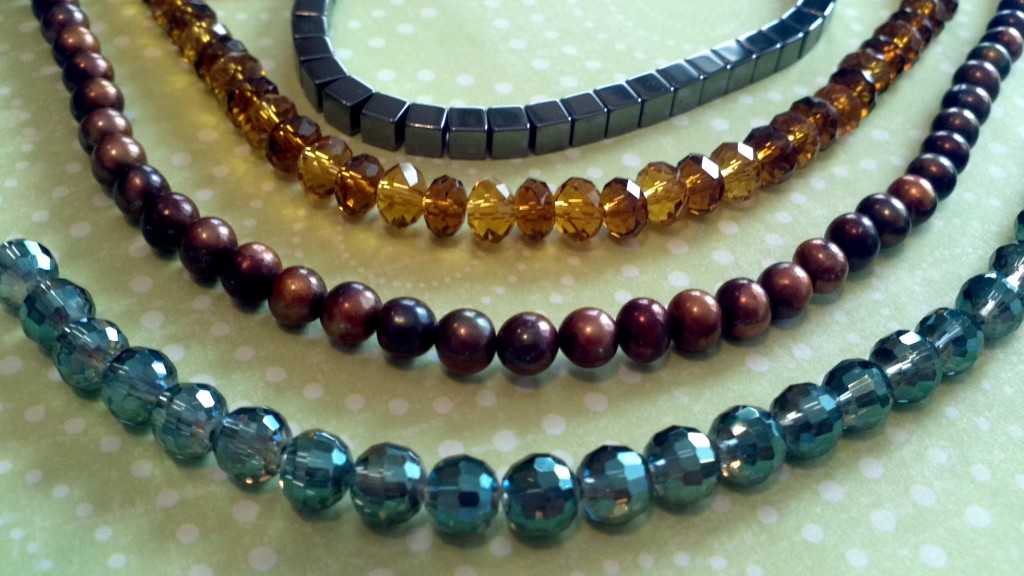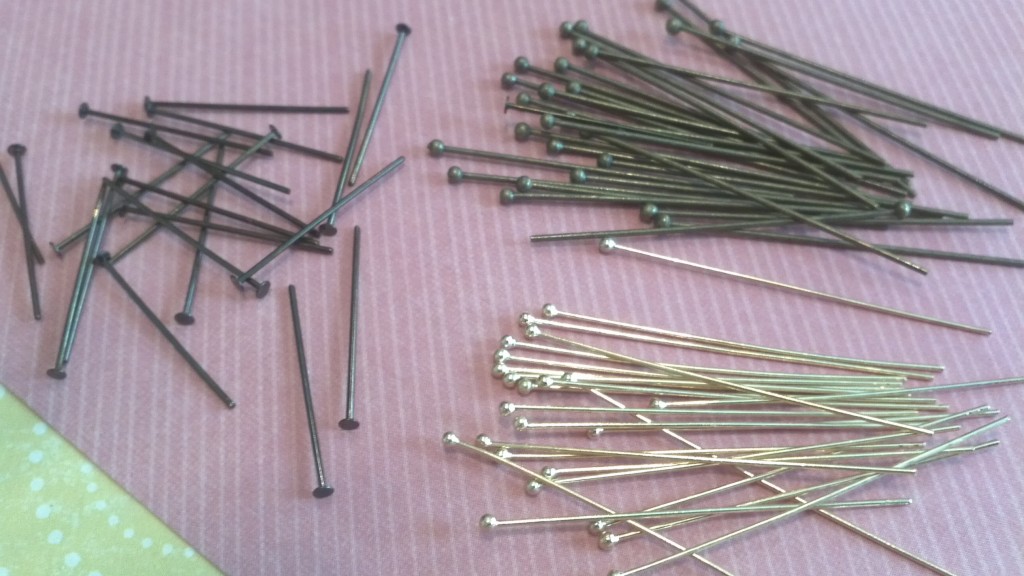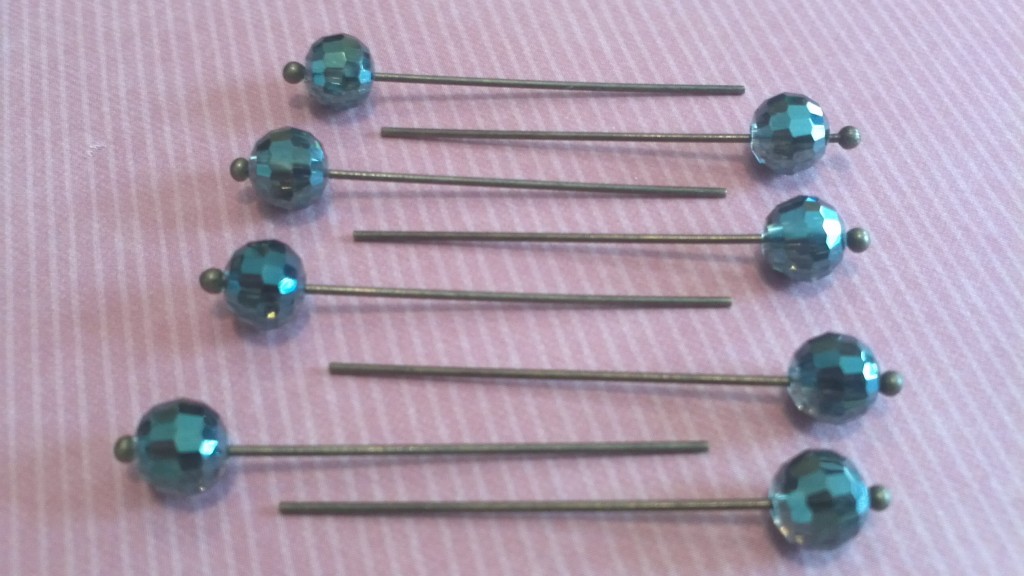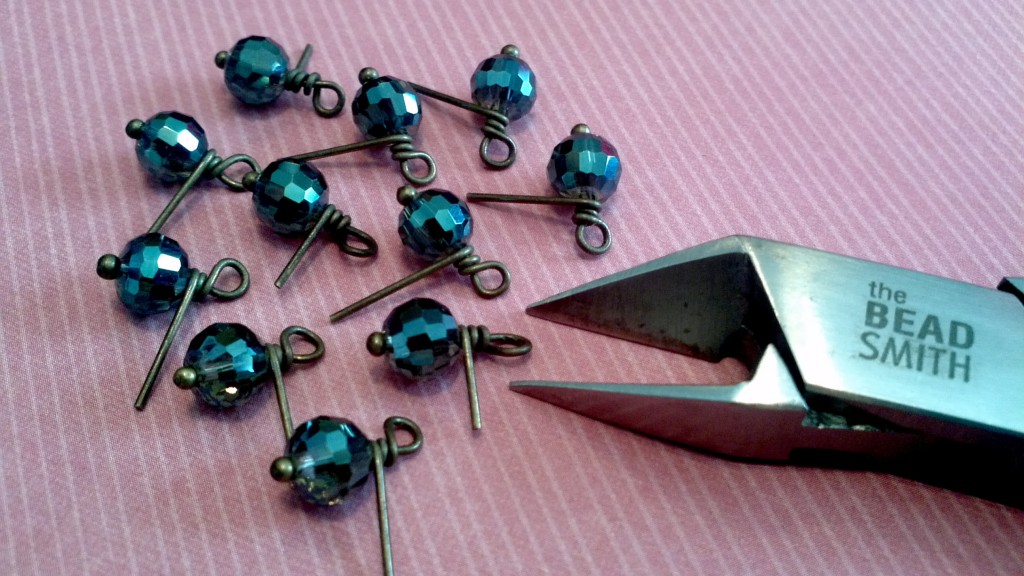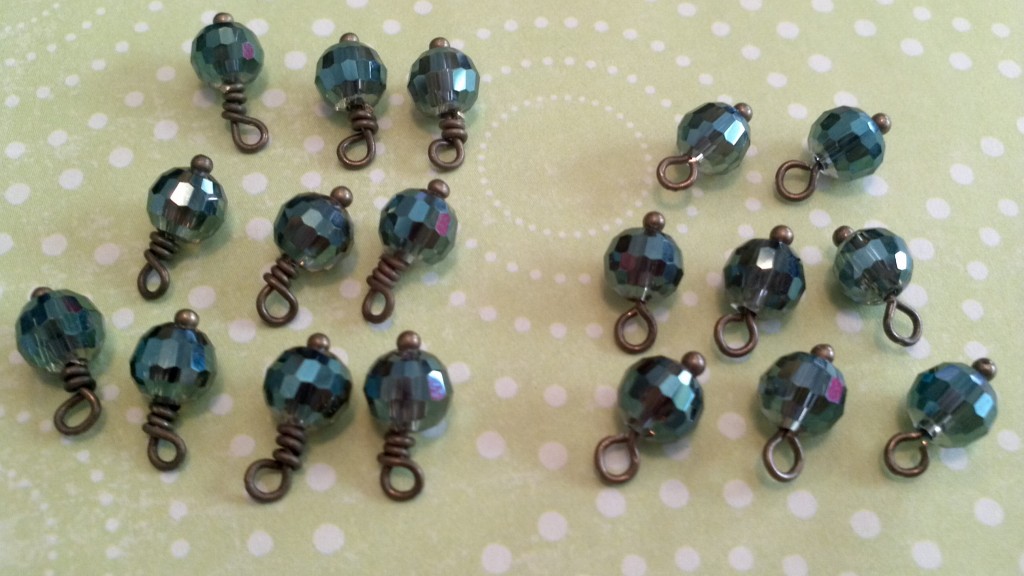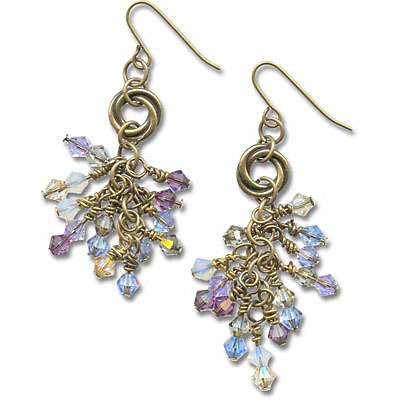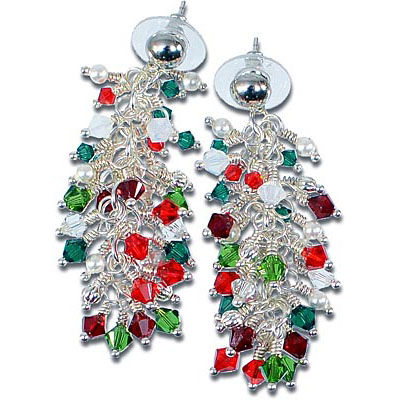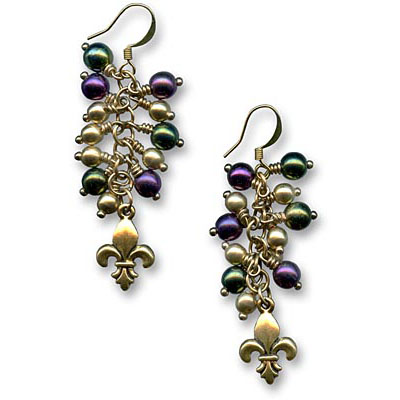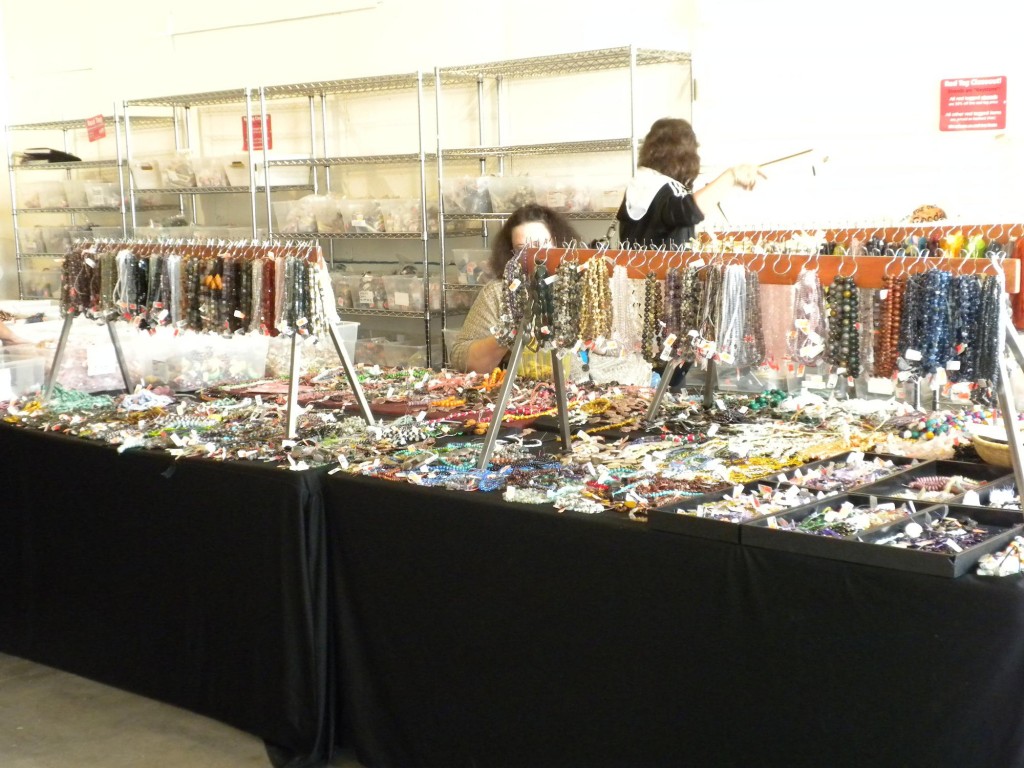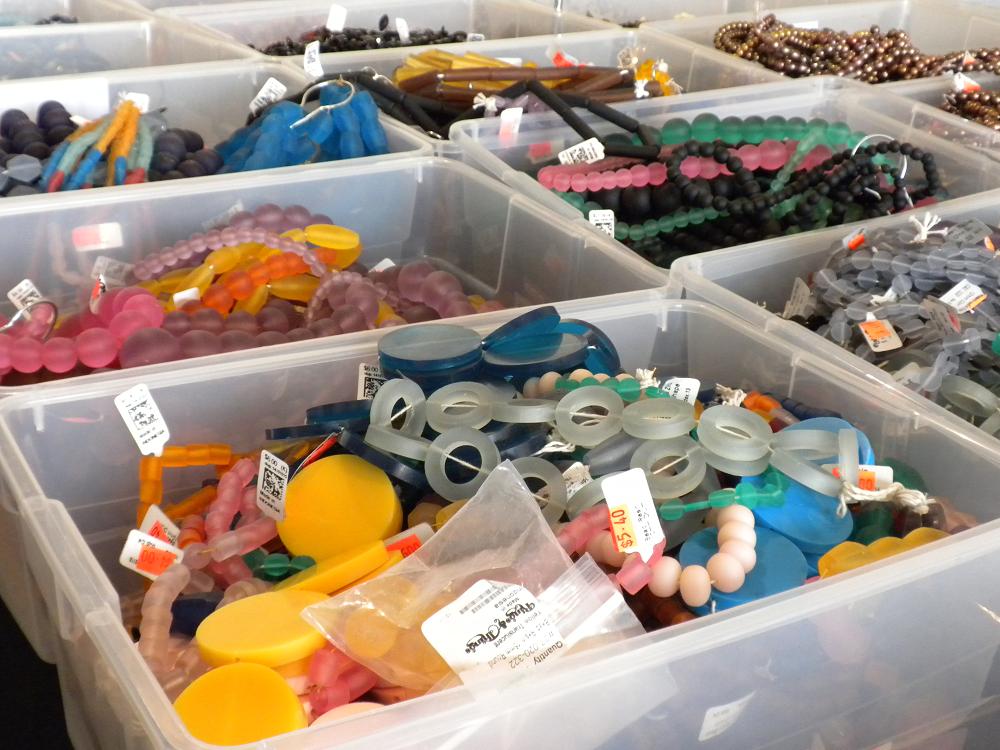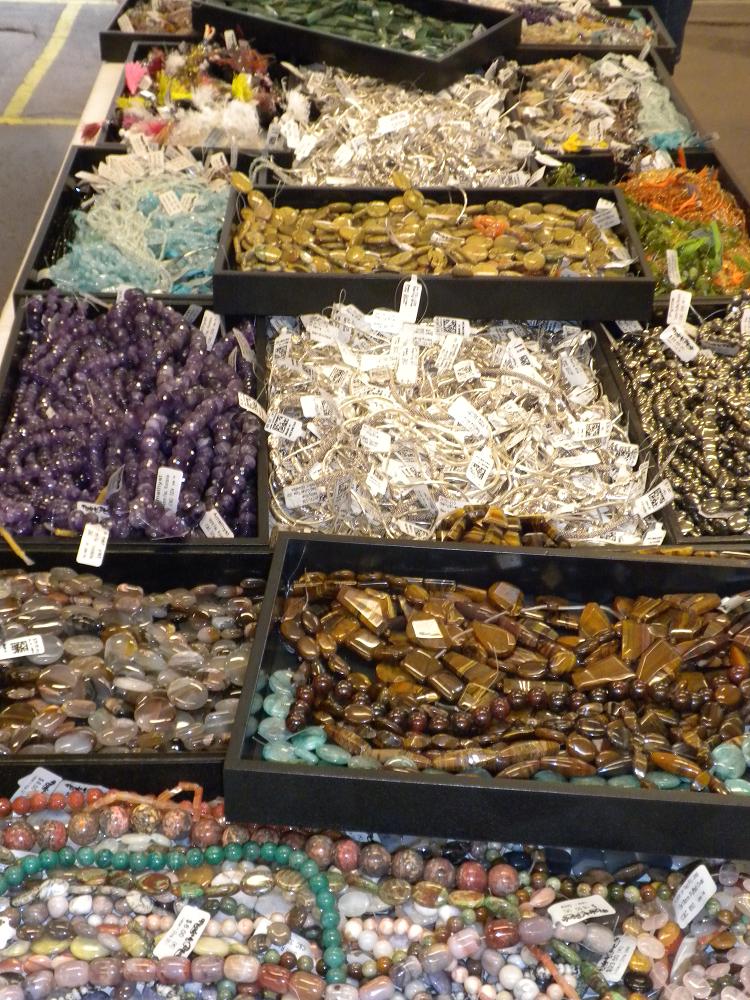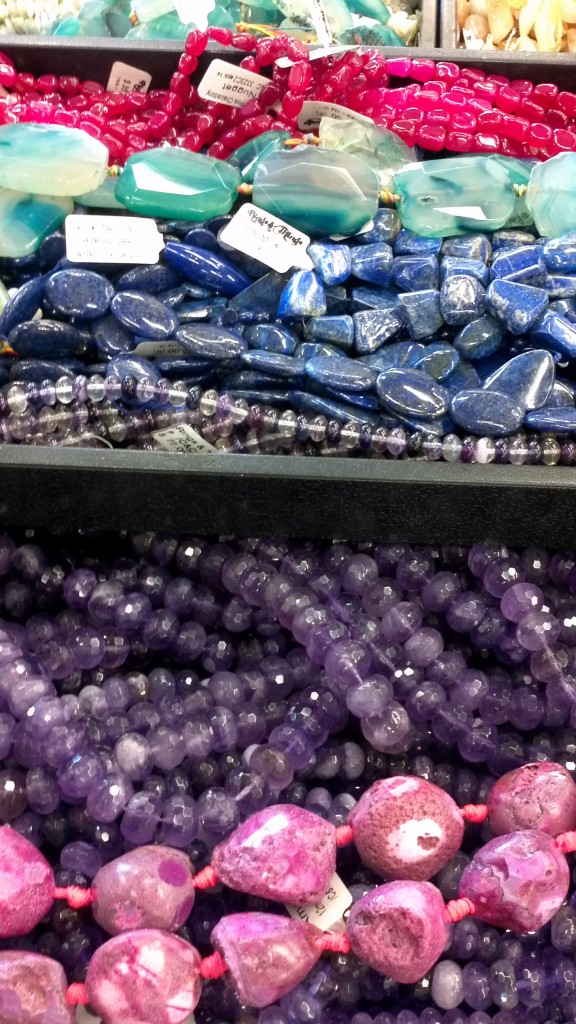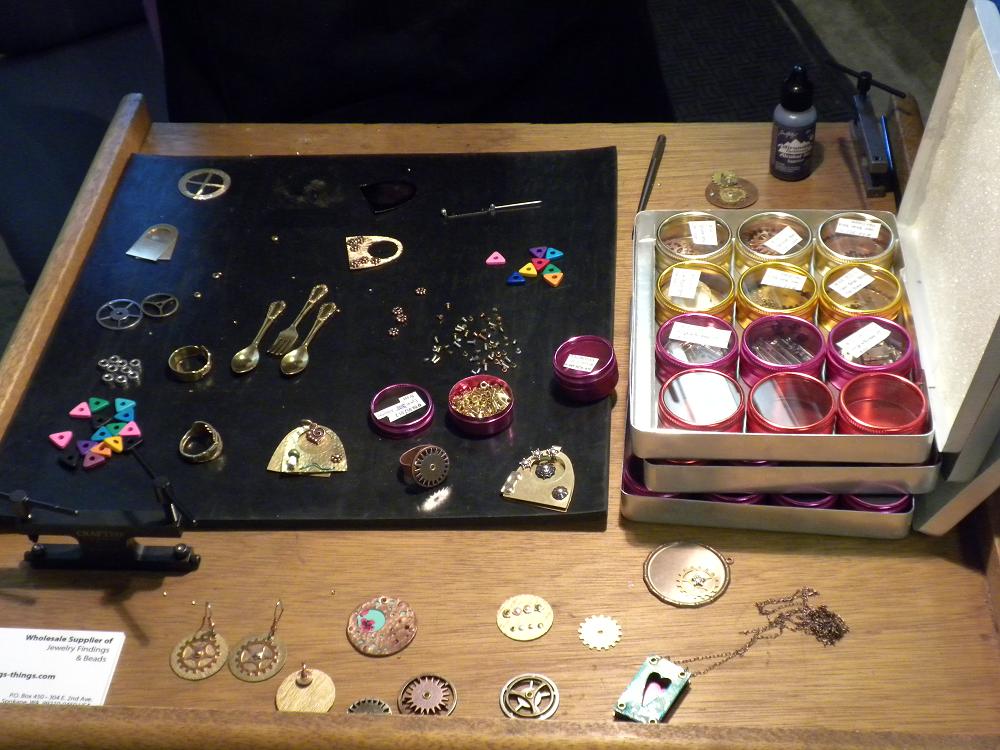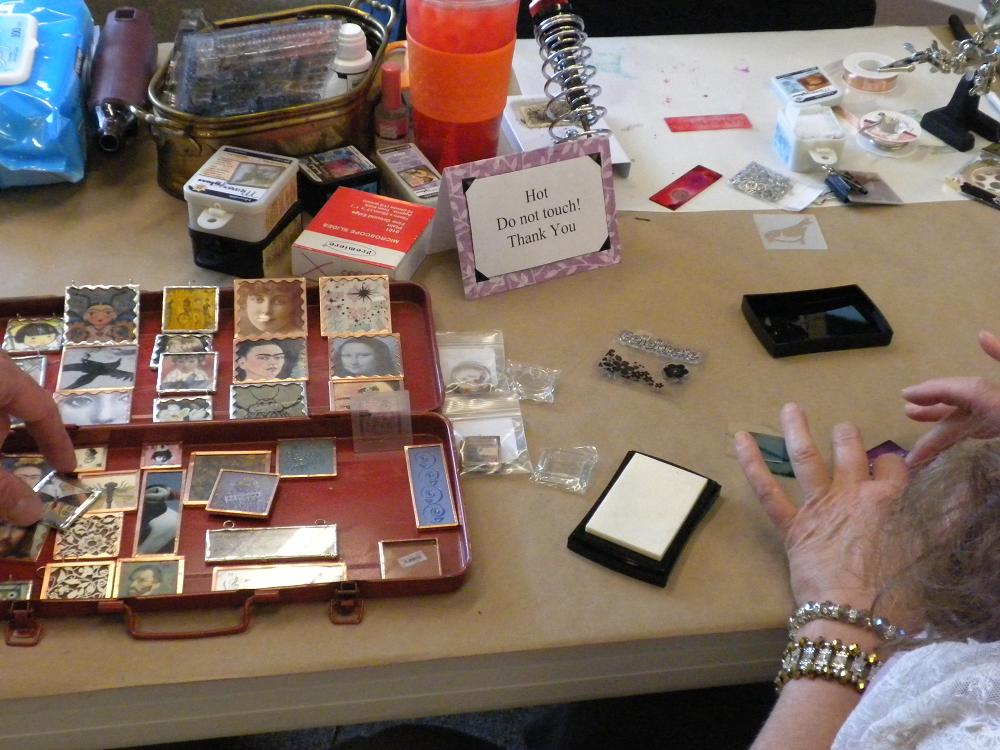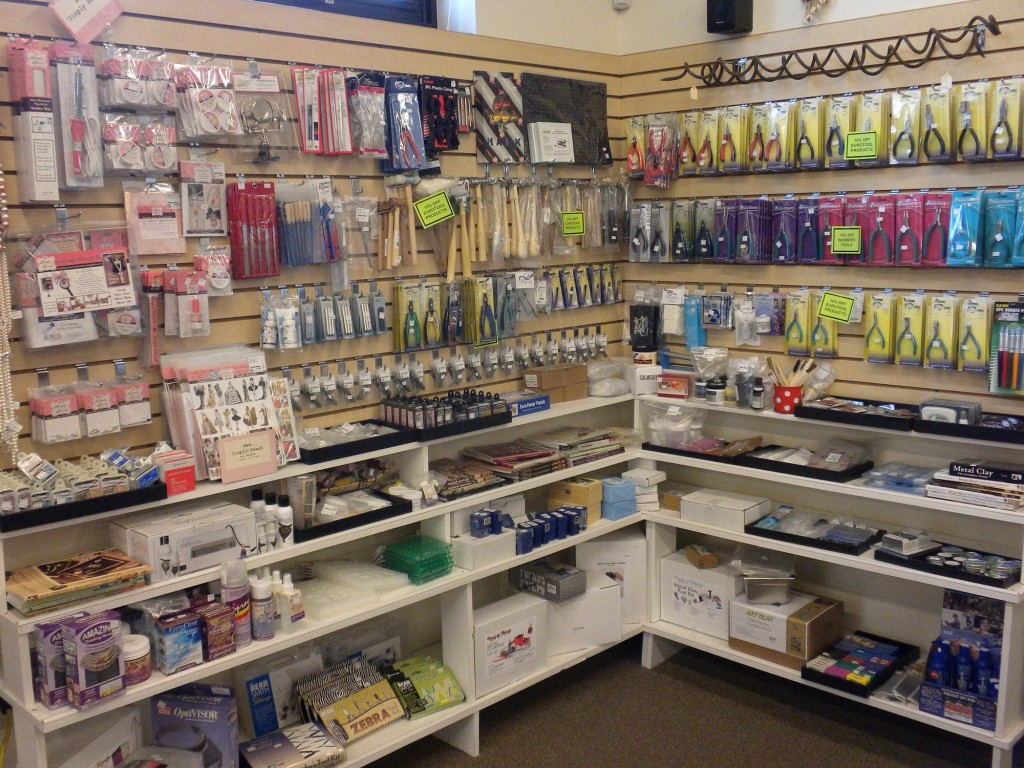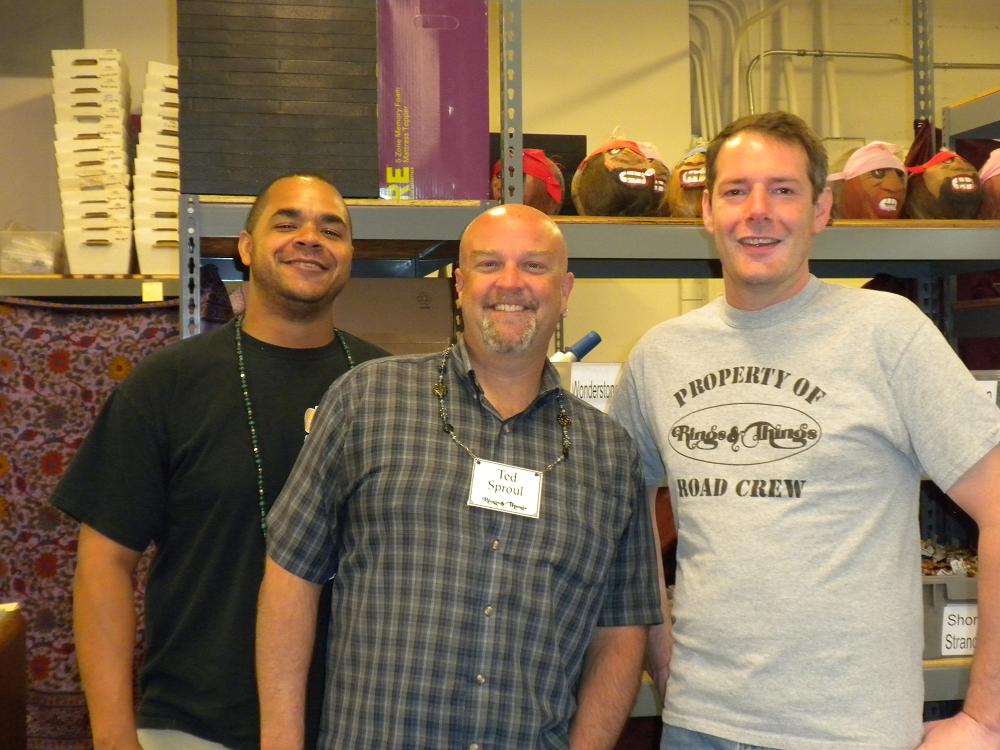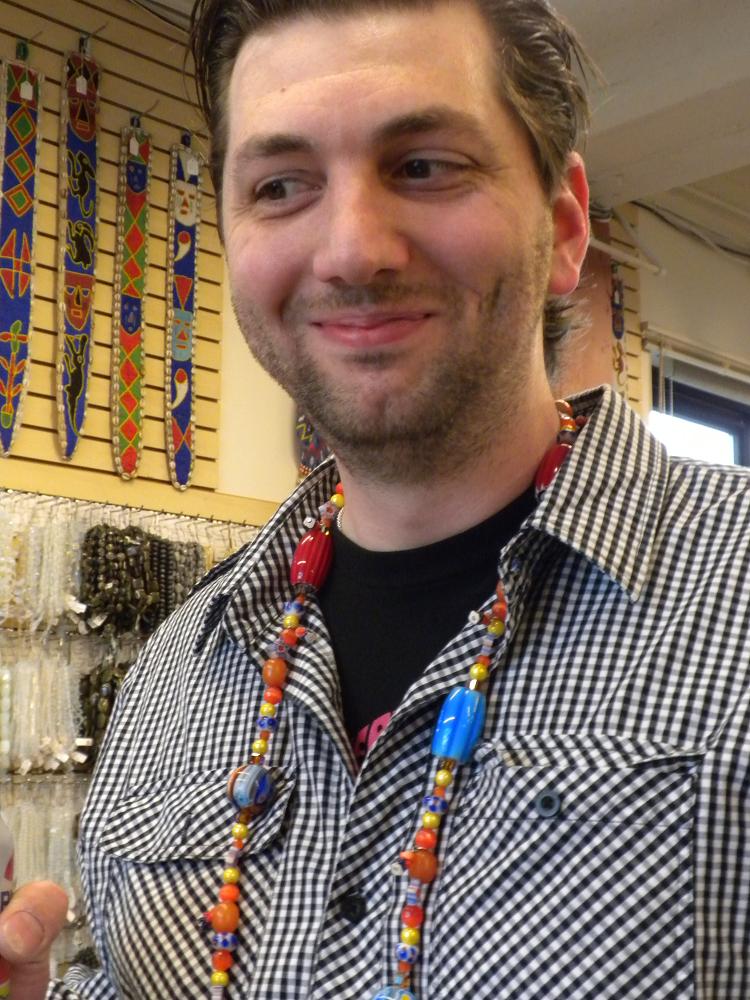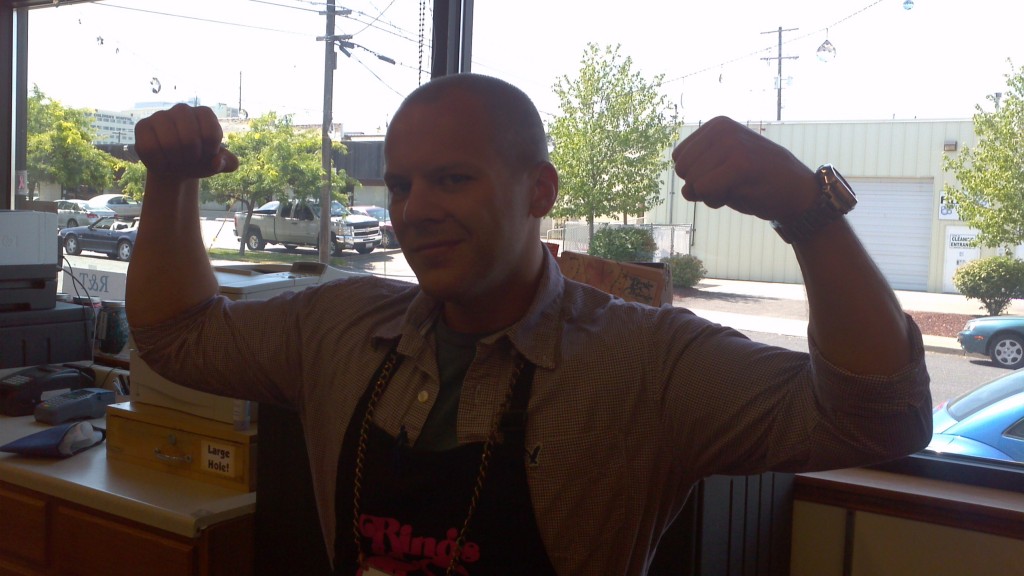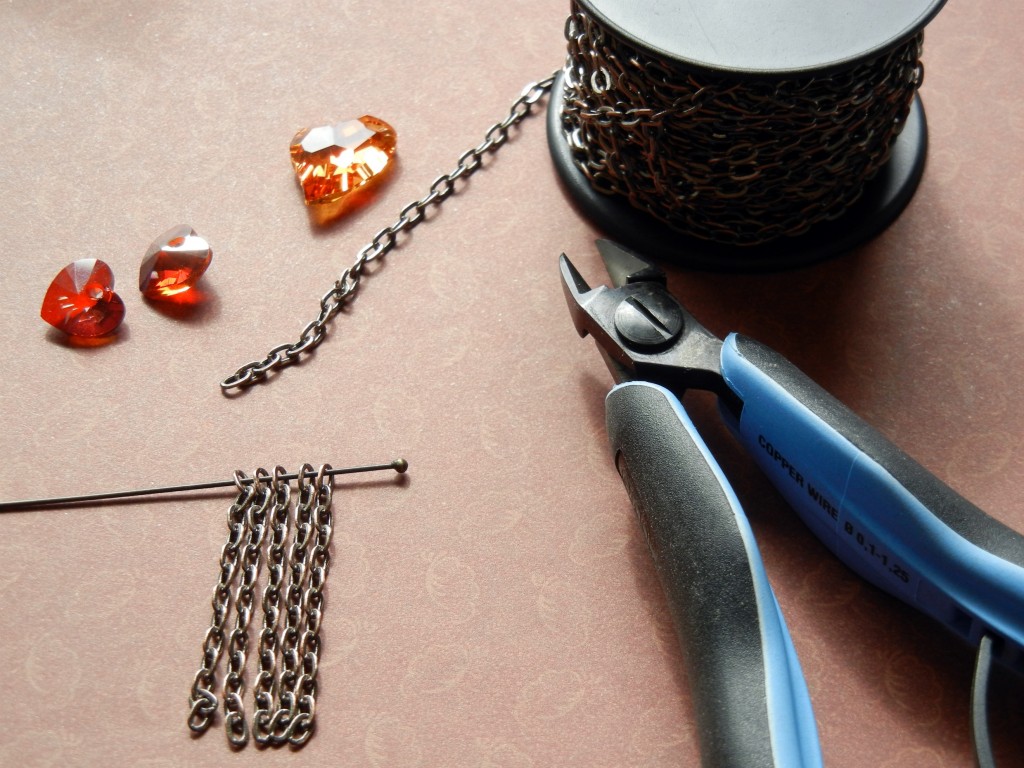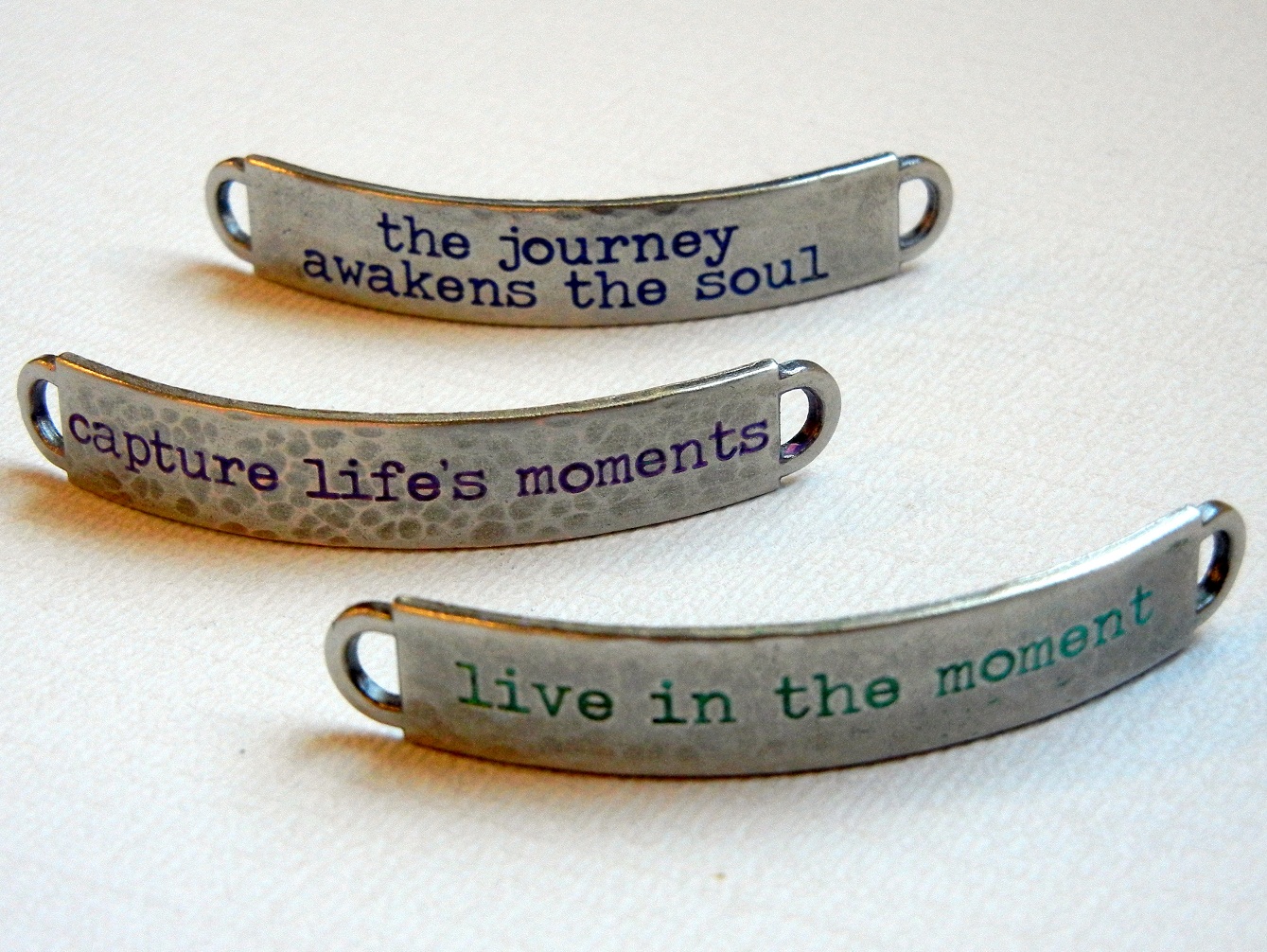
I love hand-stamped metal jewelry and given the popularity of this jewelry trend, chances are you do too. Metal stamping takes a few tools, basic stamping instruction, and practice; and sometimes more practice. But even though metal stamping is fairly easy, turning Tim Holtz idea-ology® word bands into bracelet blanks is even easier. Plus who can resist the 12 inspirational quotes?
The following is a DIY tutorial for turning Tim Holtz idea-ology® word blanks into curved bracelet blanks for use in your mixed-media jewelry projects.
You will need these tools and supplies:
- chasing hammer
- 4″ square steel bench block
- nylon jaw bracelet bending pliers
- Tim Holtz idea-ology®, Word Bands
- Vintaj patina
- masking tape
- disposable work surface…or a reusable Non-Stick Craft Sheet
- paint brush
- damp paper towel or baby wipe
Tape the word band, script side up, to the steel block with masking tape. Repeatedly strike the word band with the pein side of the chasing hammer to add a hammered texture. Remove the word band from the steel block.
Use nylon-jaw, bracelet-bending pliers to turn the idea-ology word band into a curved bracelet blank. Place the flat blank lengthwise in the pliers’ jaw with the script side facing the concave half of the jaw. Gently squeeze the pliers. Reposition the blank and repeat until the word band is fully curved.
.
For a splash of color, paint the idea-ology word band’s script with Vintaj patina. Use a paint brush to liberally apply the patina to the word band, making sure patina is applied into all the letter indentations. You can use a mix of patina colors, or a single color. Allow to air dry for a few minutes.
.
Wipe the word band with a damp paper towel or baby wipe to remove the excess patina. As you wipe, be careful not to remove the color in the letter indentations. Allow the patina to fully dry.
Now your “stamped” bracelet blank is ready to adorn your choice of bracelet (or maybe you turned all 12 word bands into bracelet blanks). In the next Rings & Things Blog post (How to Make Leather Bracelets – Two Finishing Methods), I will share two ways to finish leather cuff bracelets using the customized word bands and our new colorful leather strips. oh, and “word” from Tim Holtz is we can look forward to new styles of word bands coming soon, “Word Bands Observation” and “Word Bands Christmas”.
Make things!
Mollie

